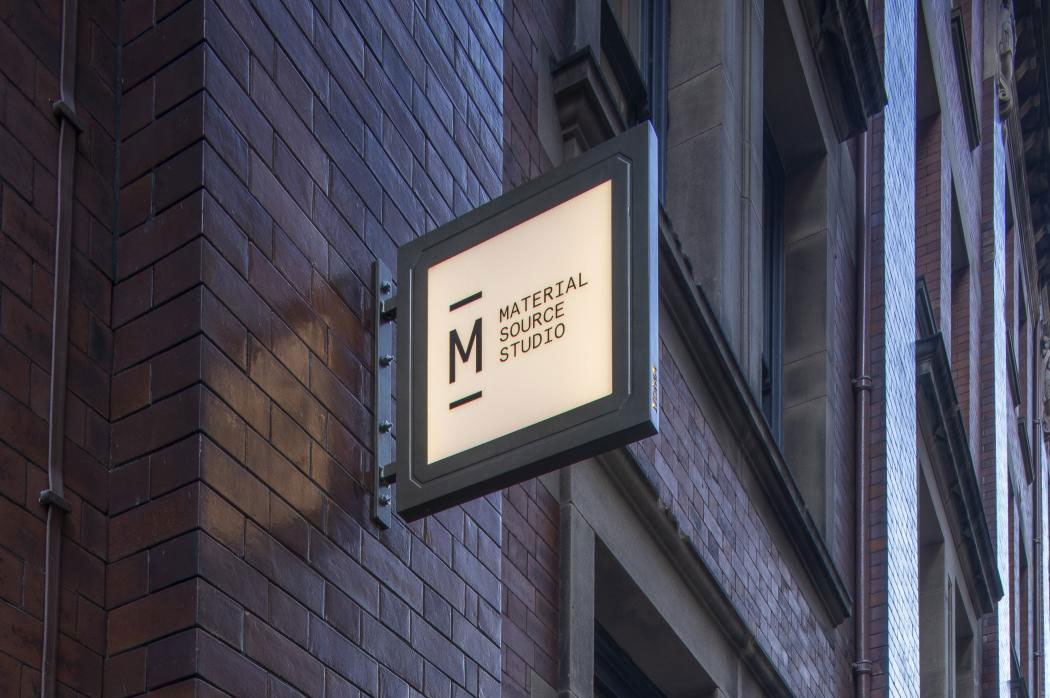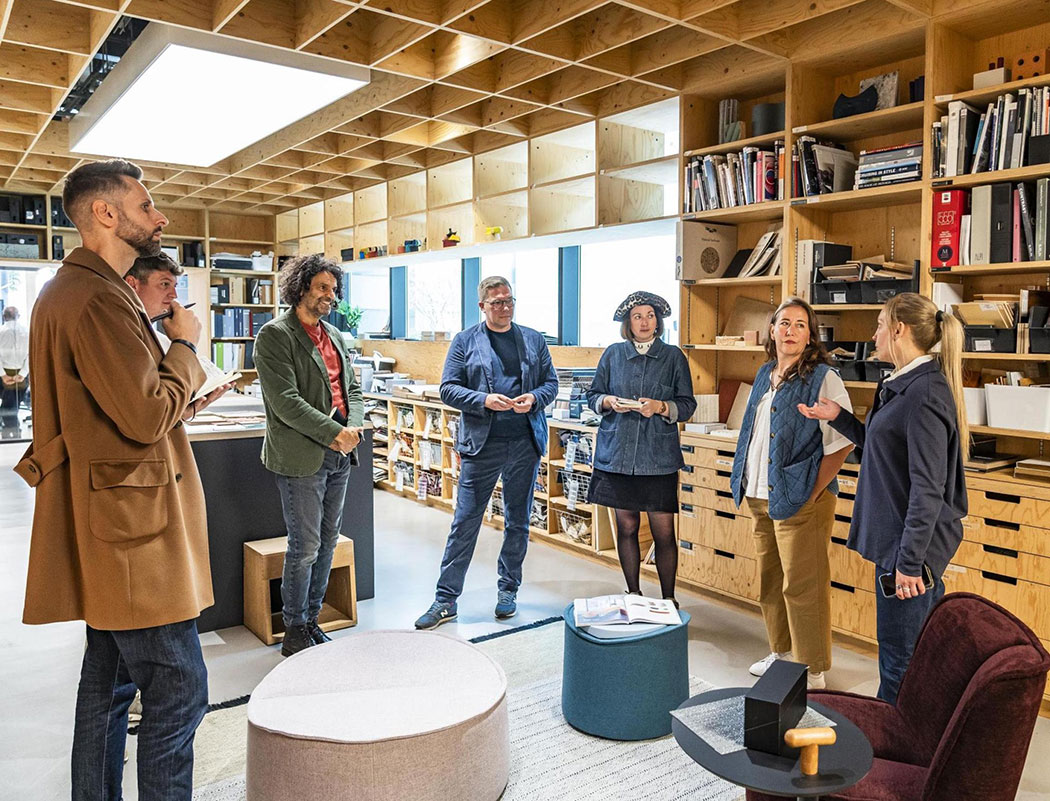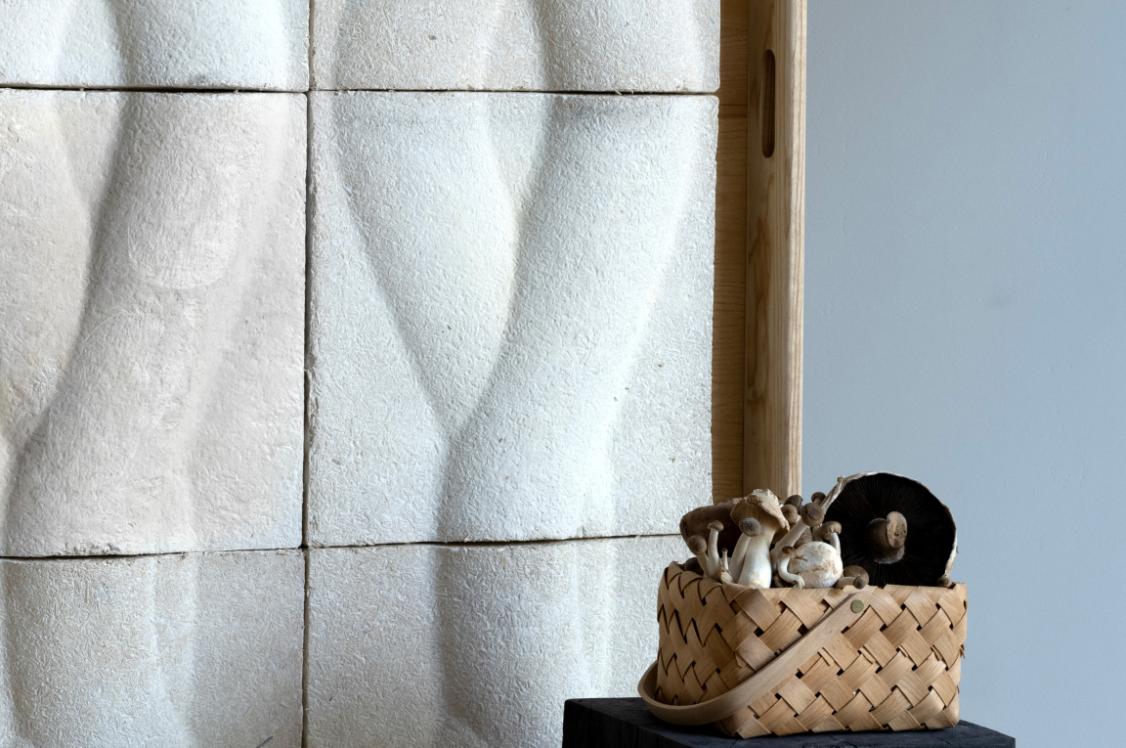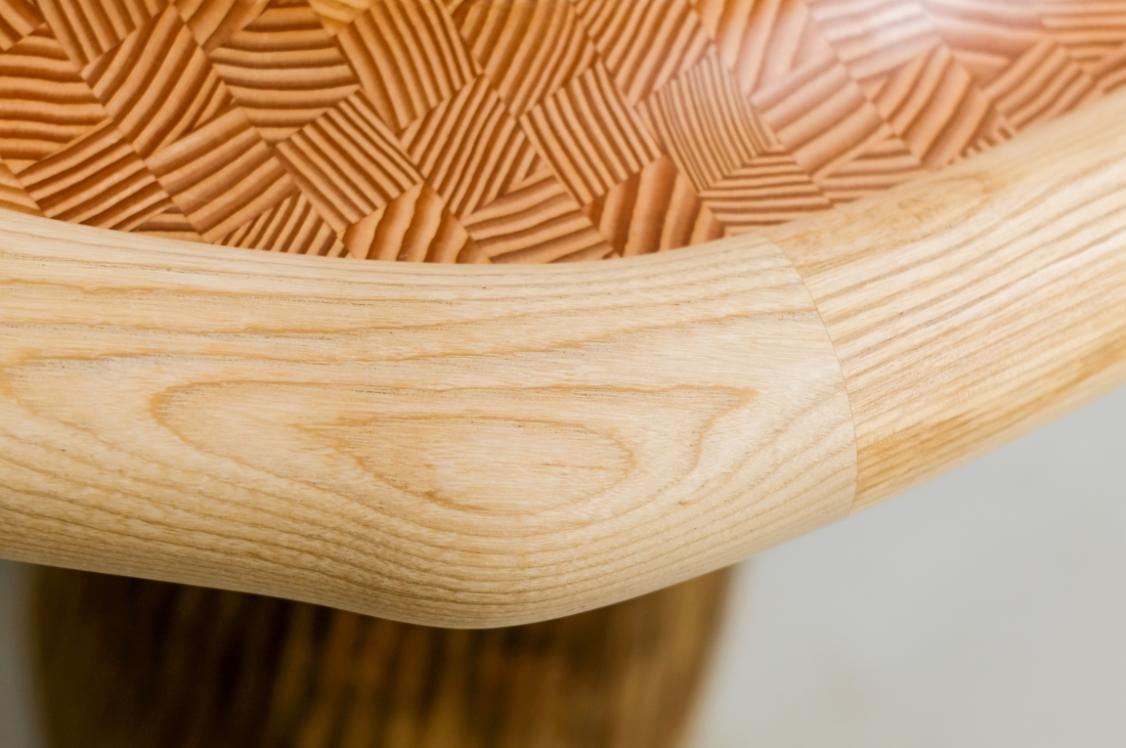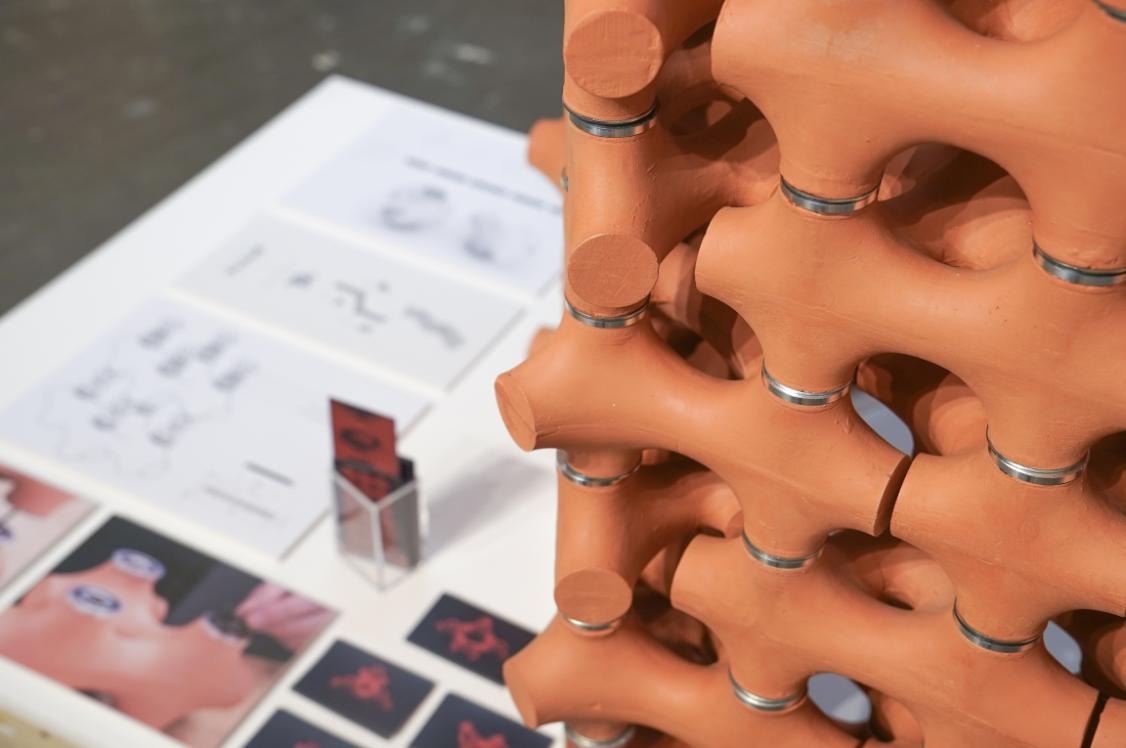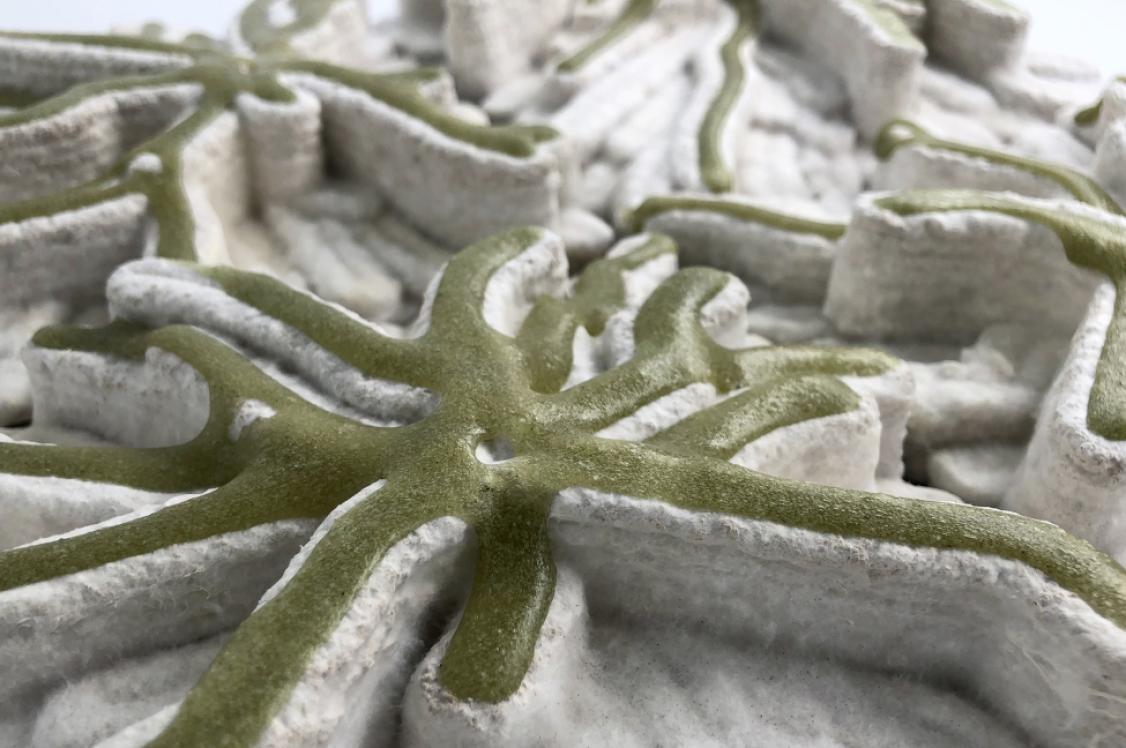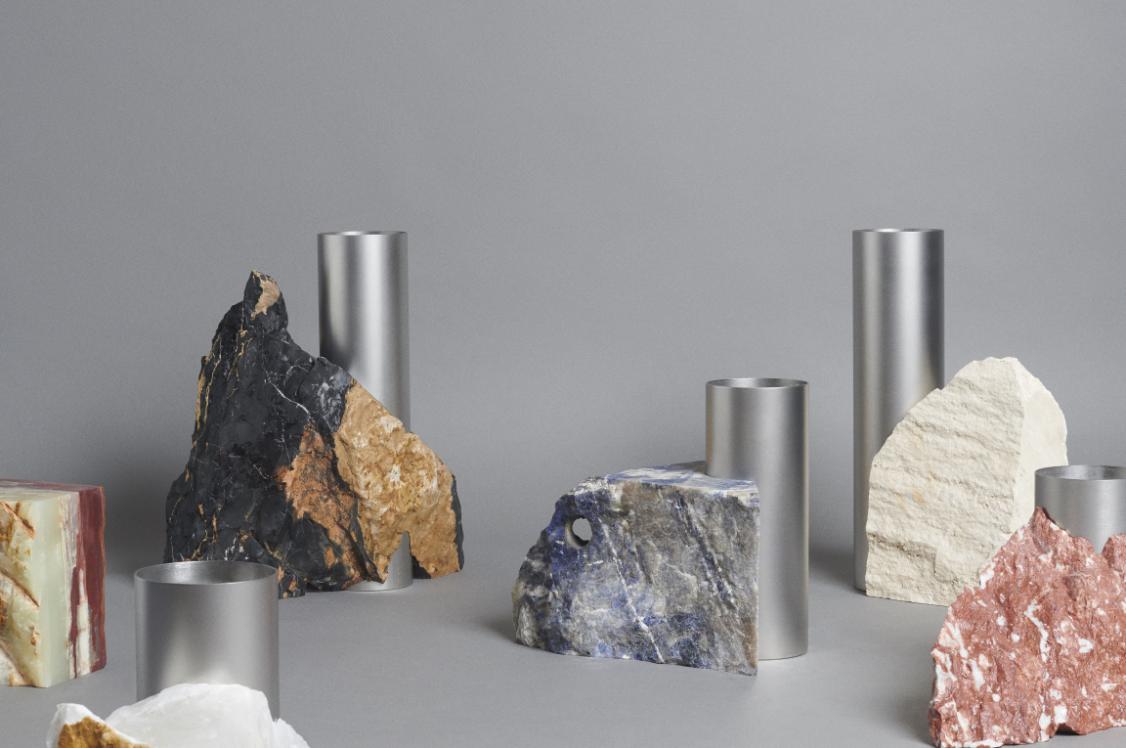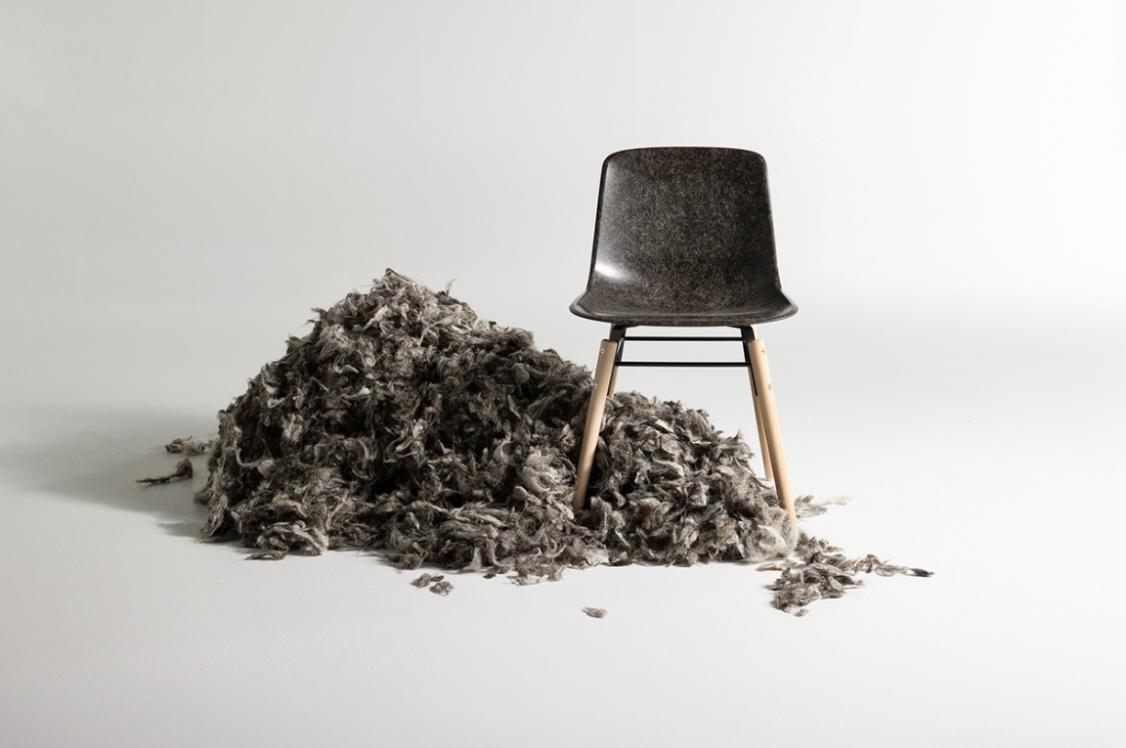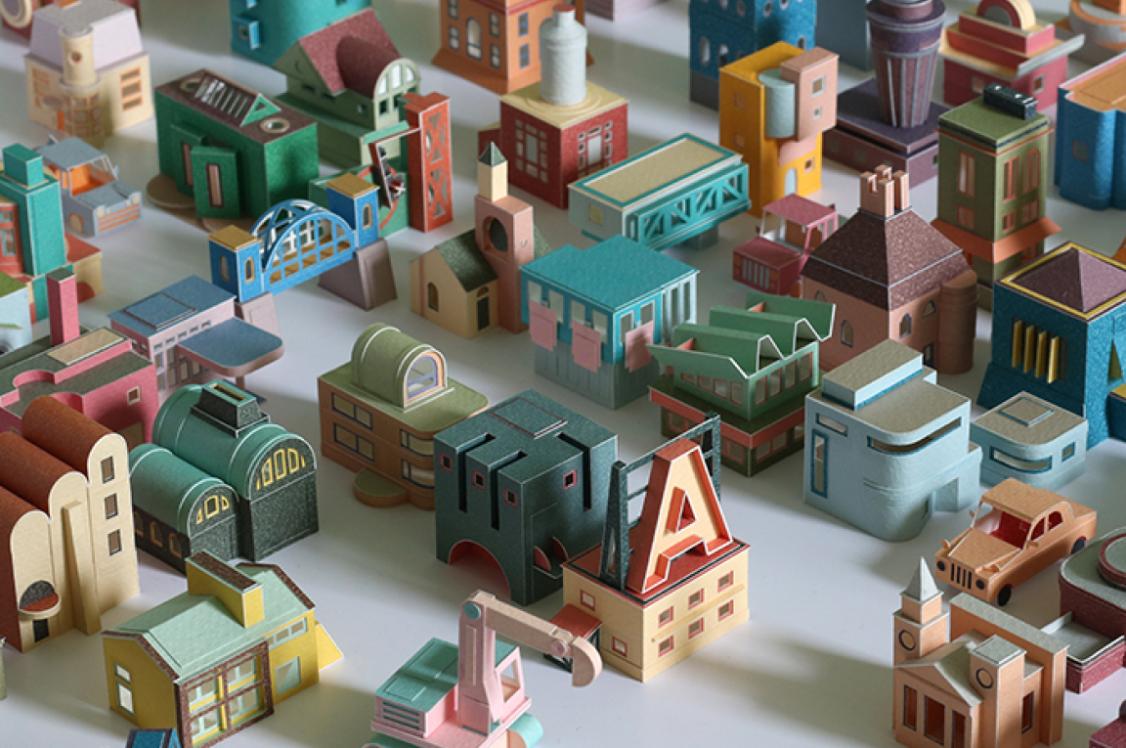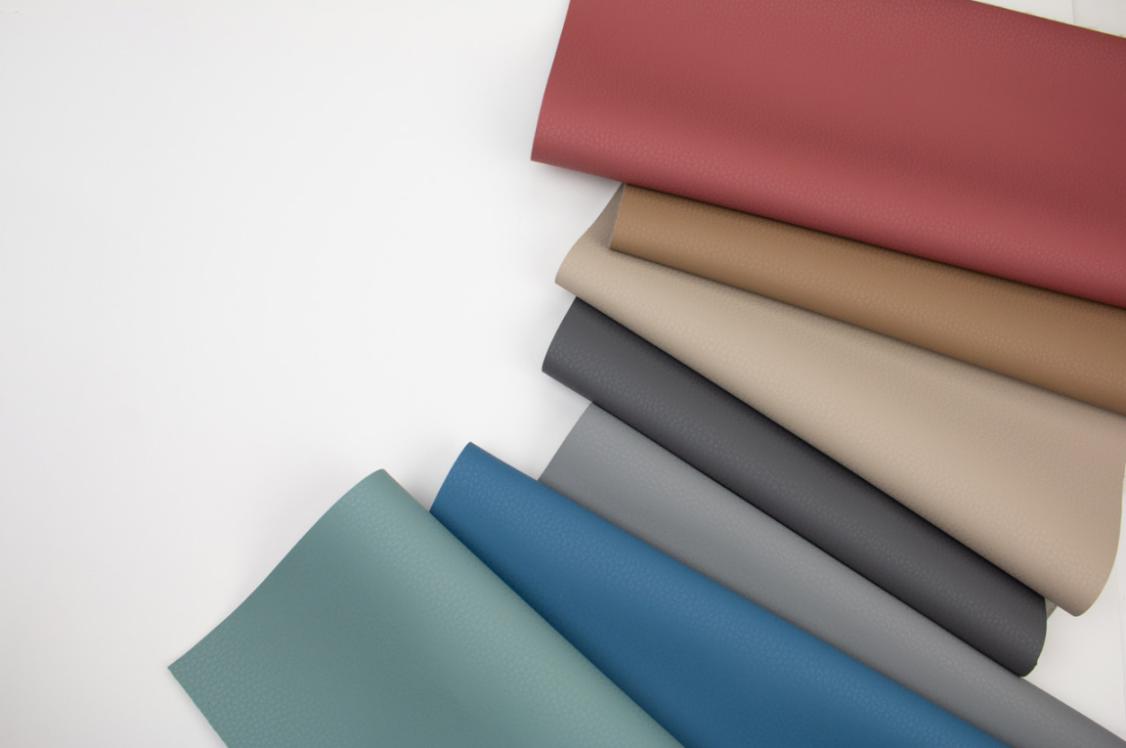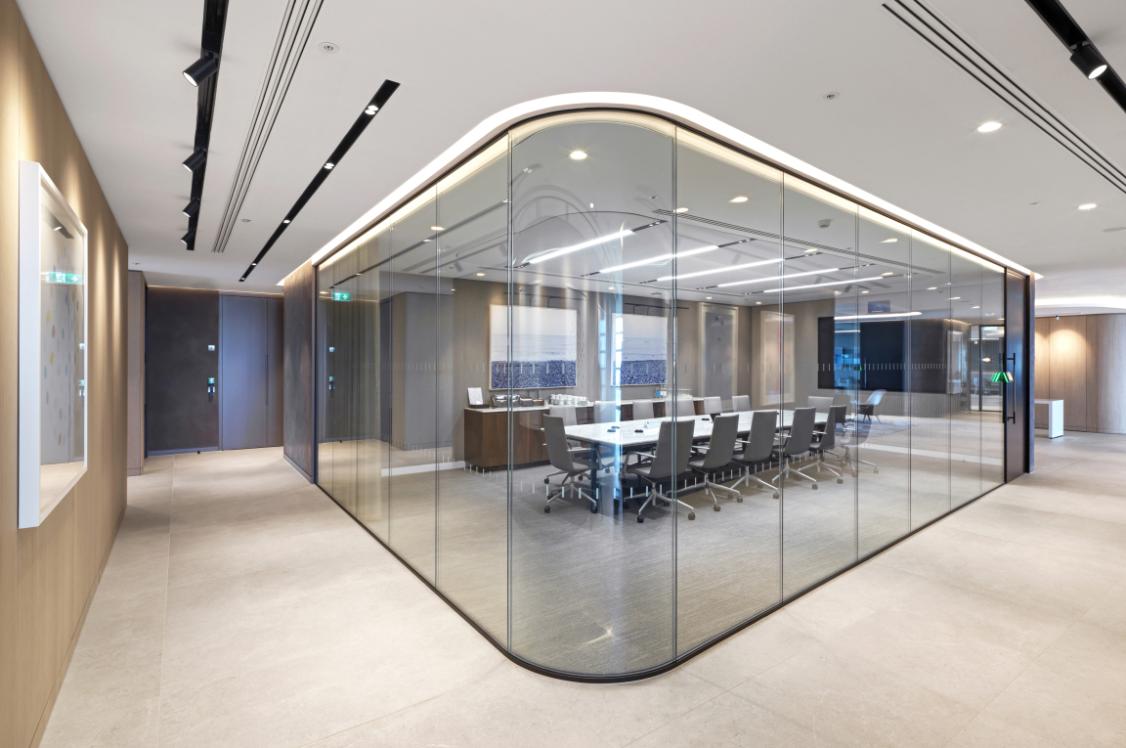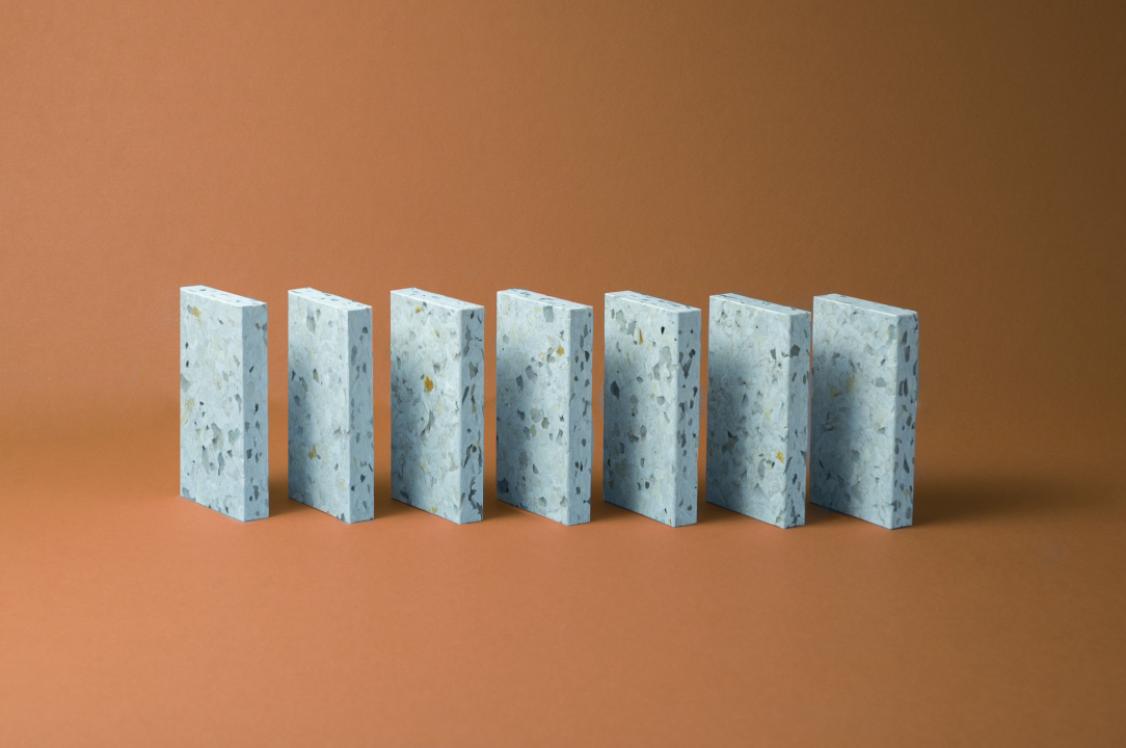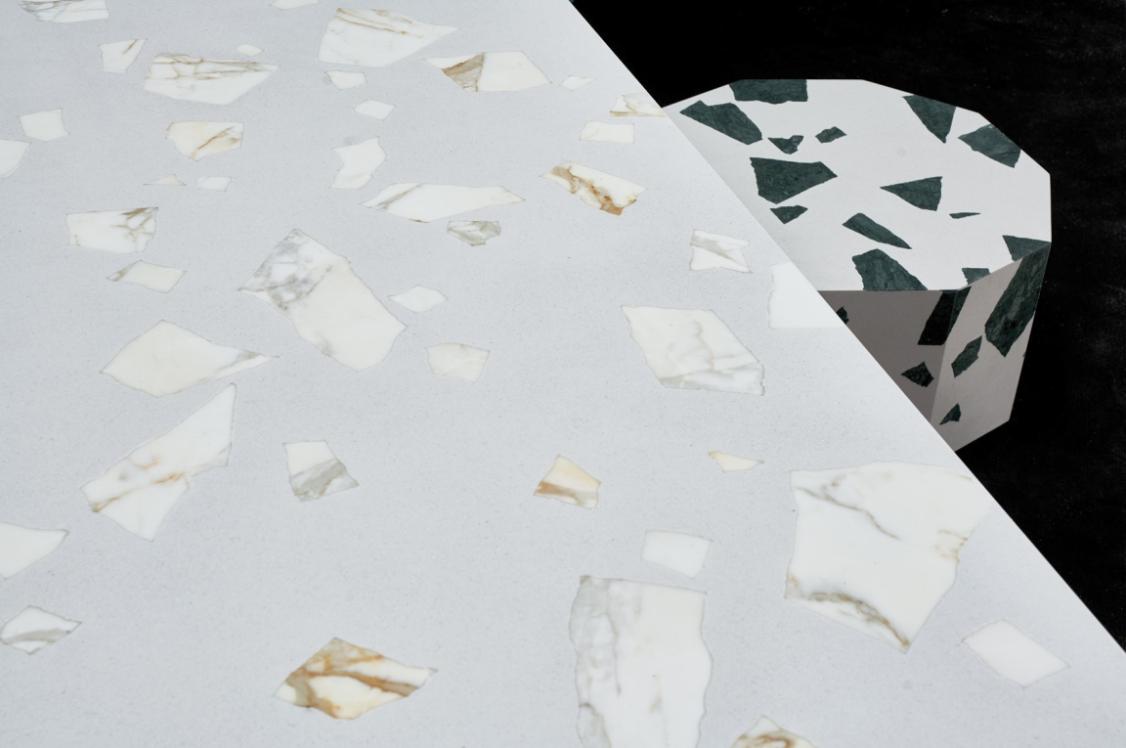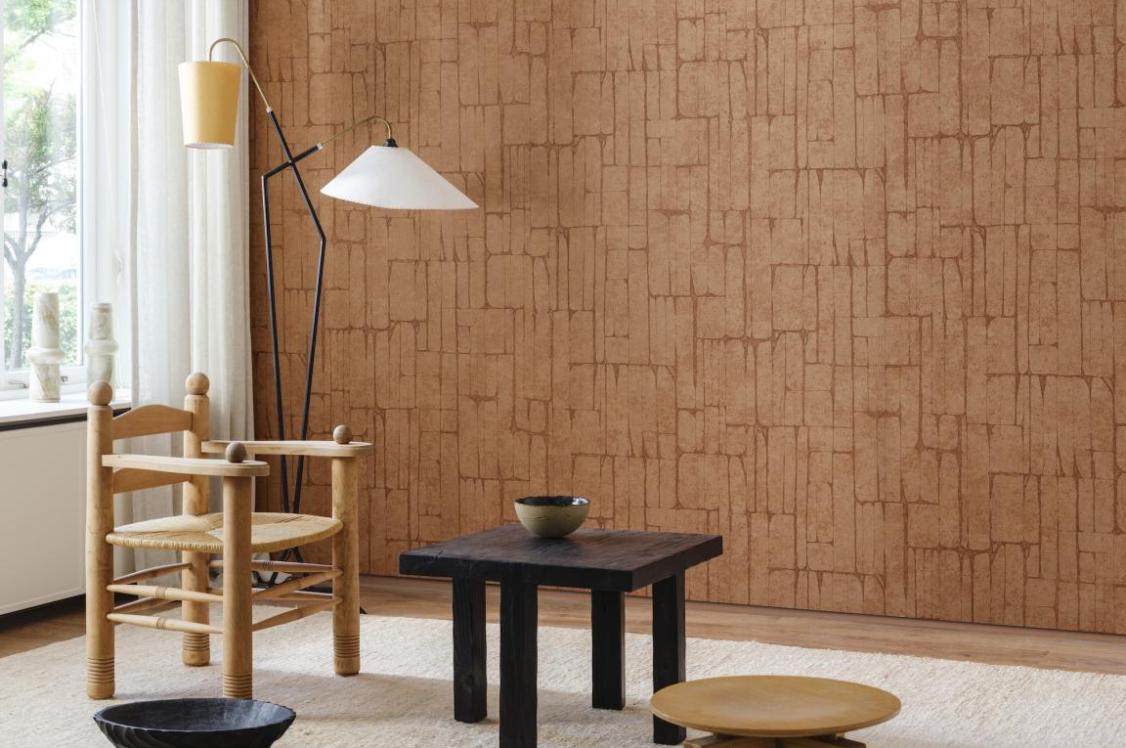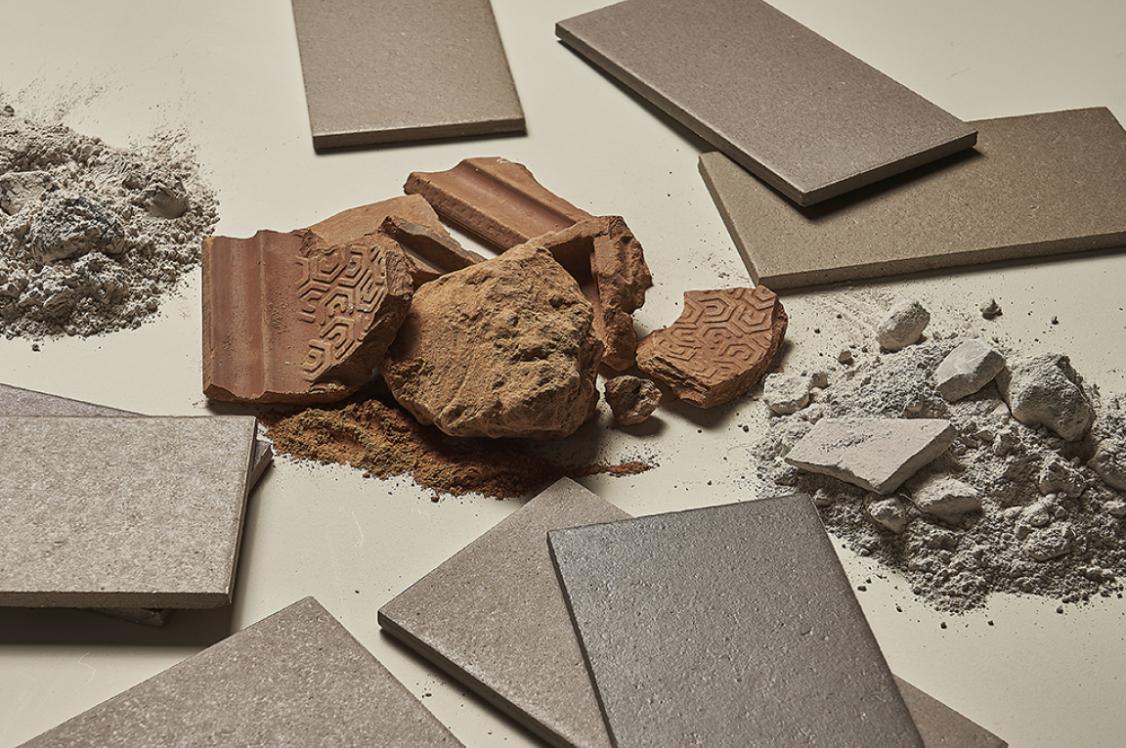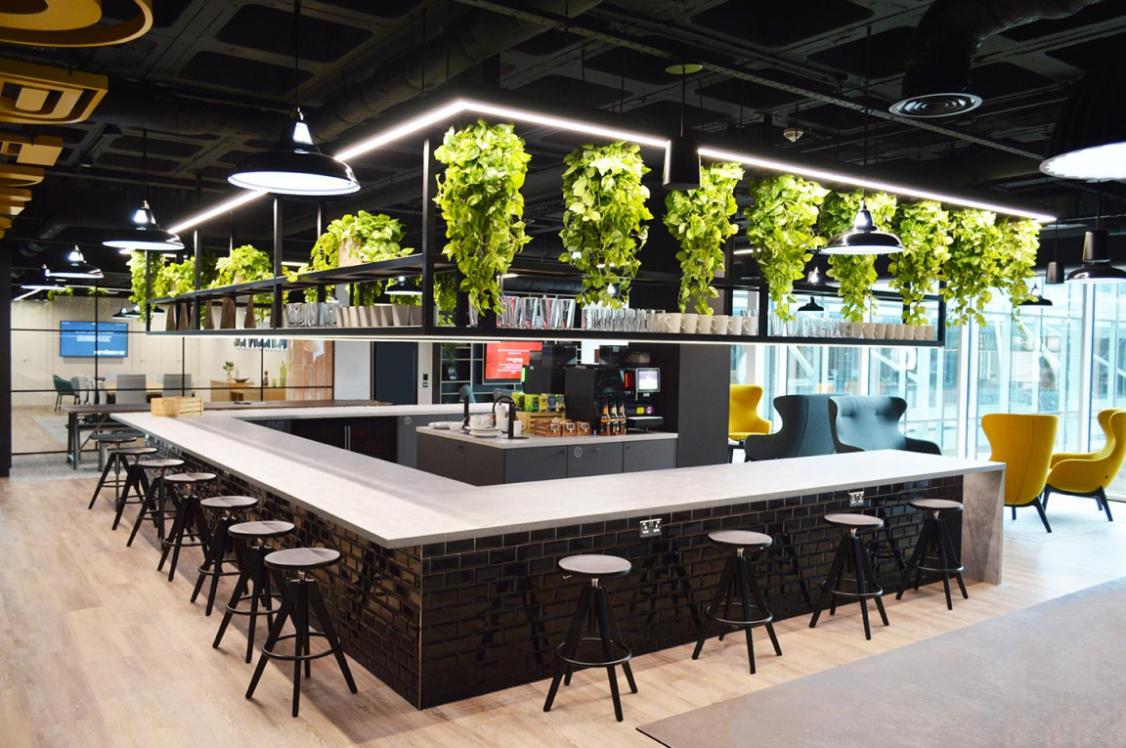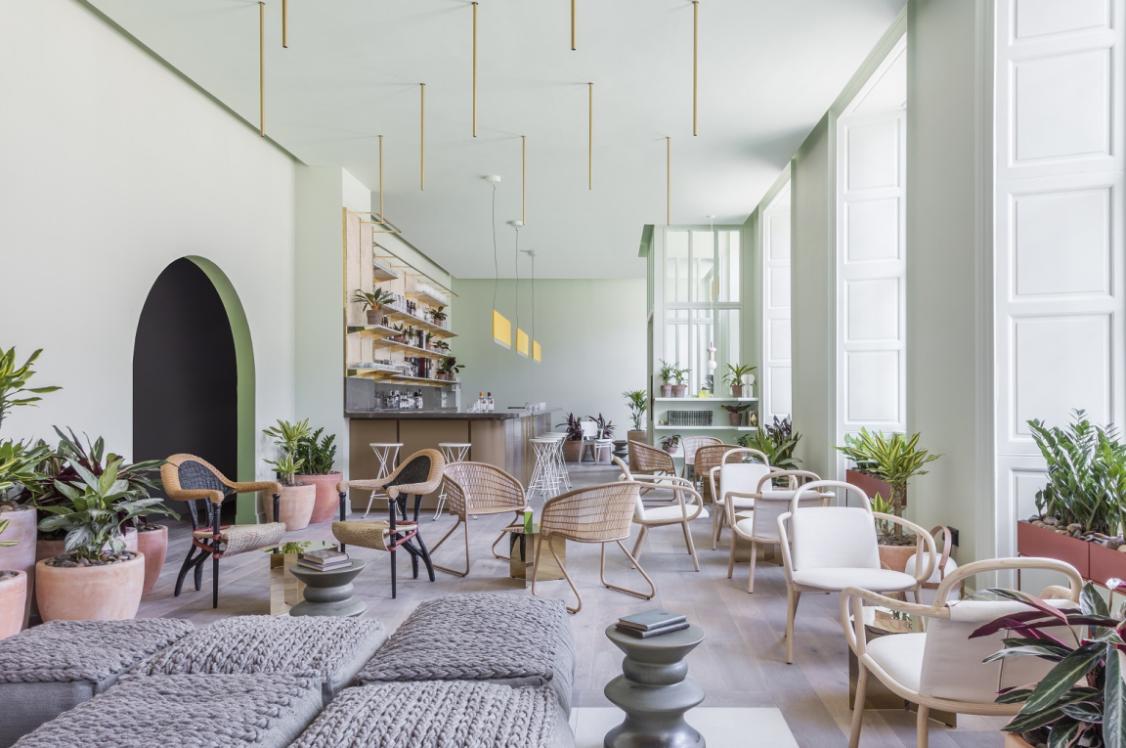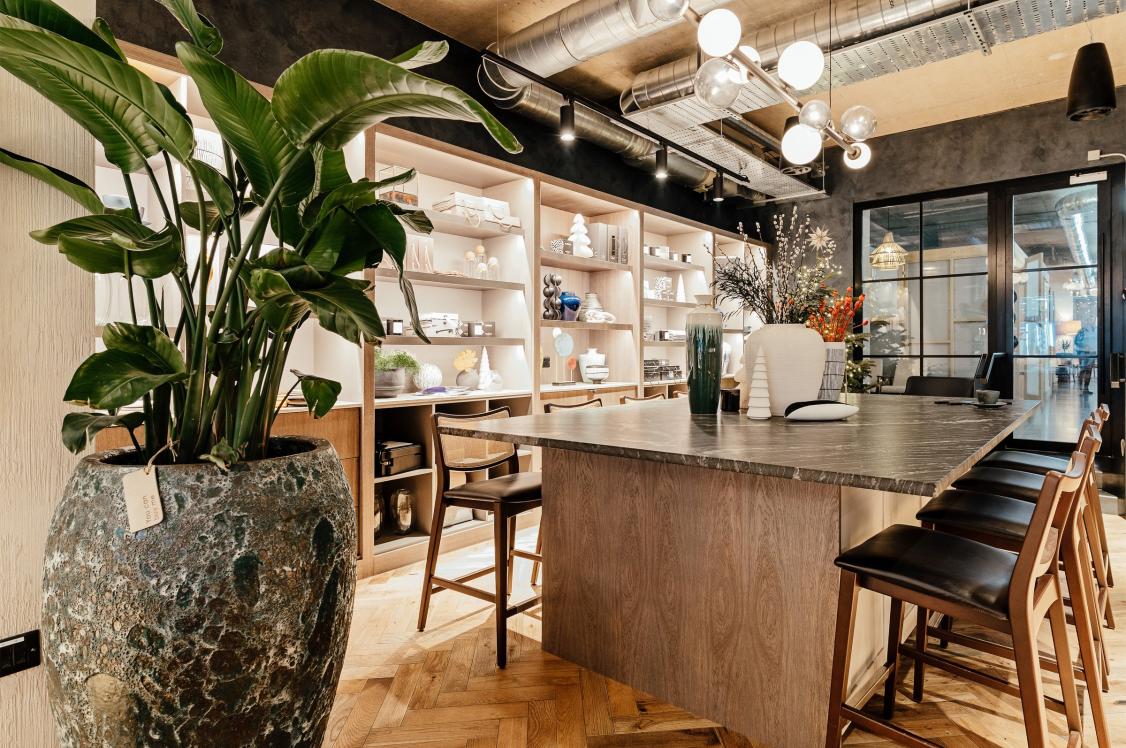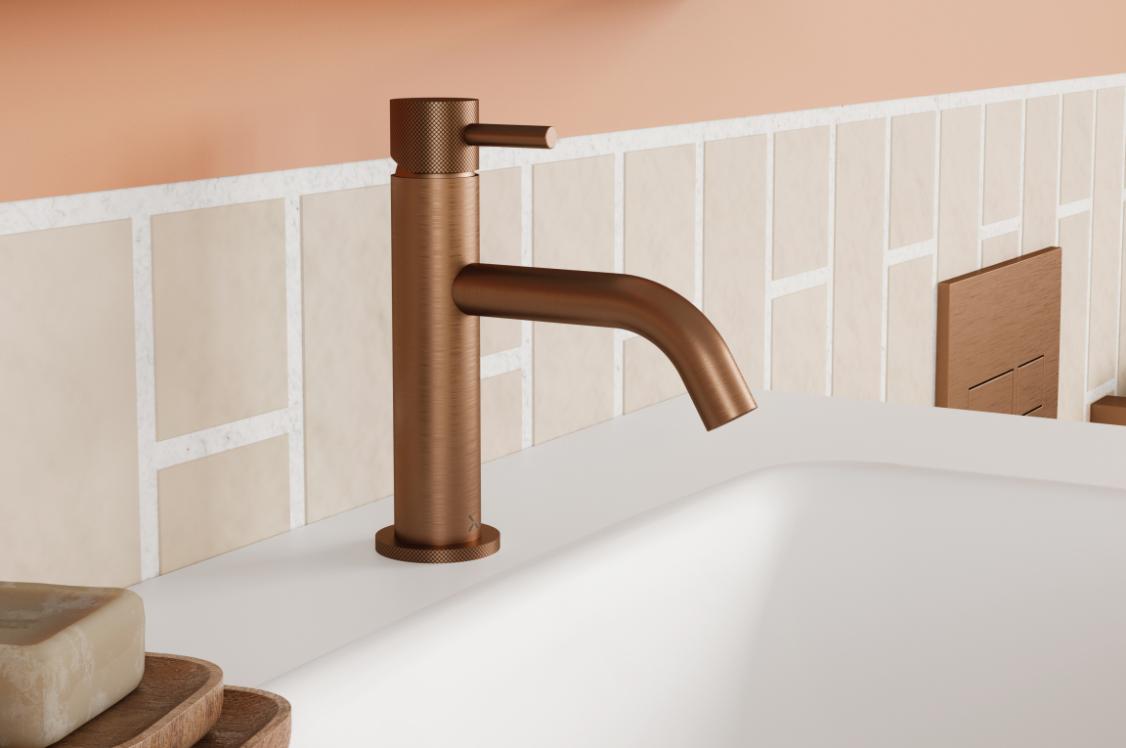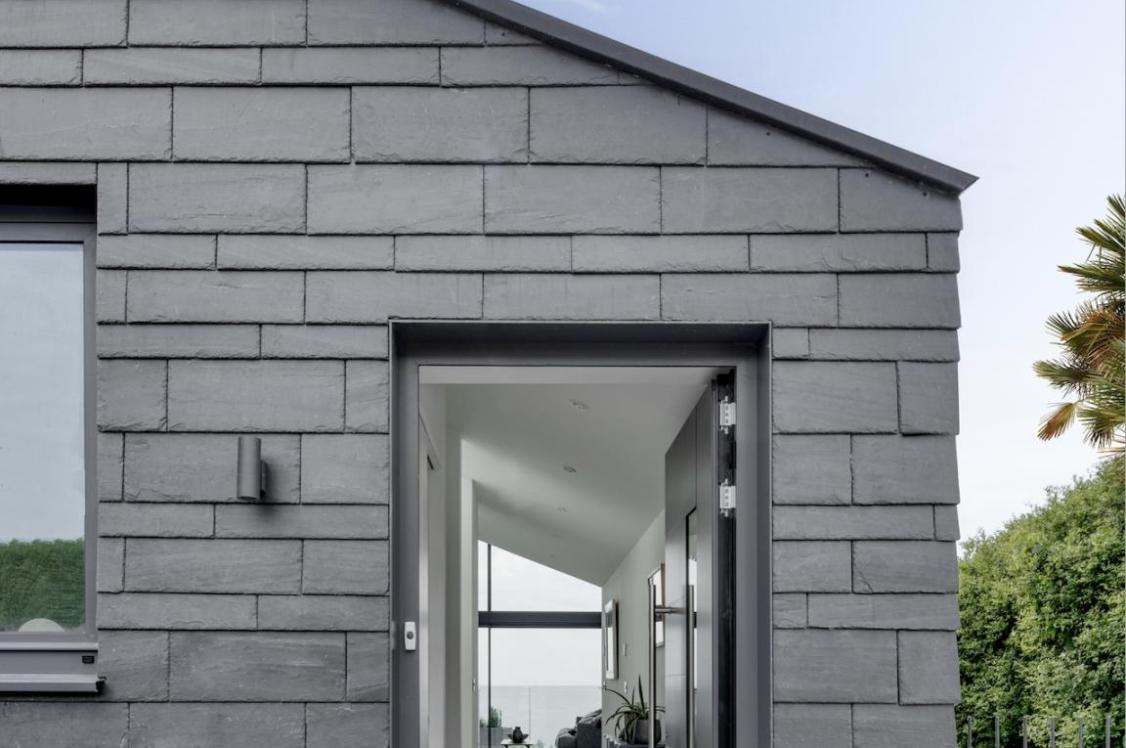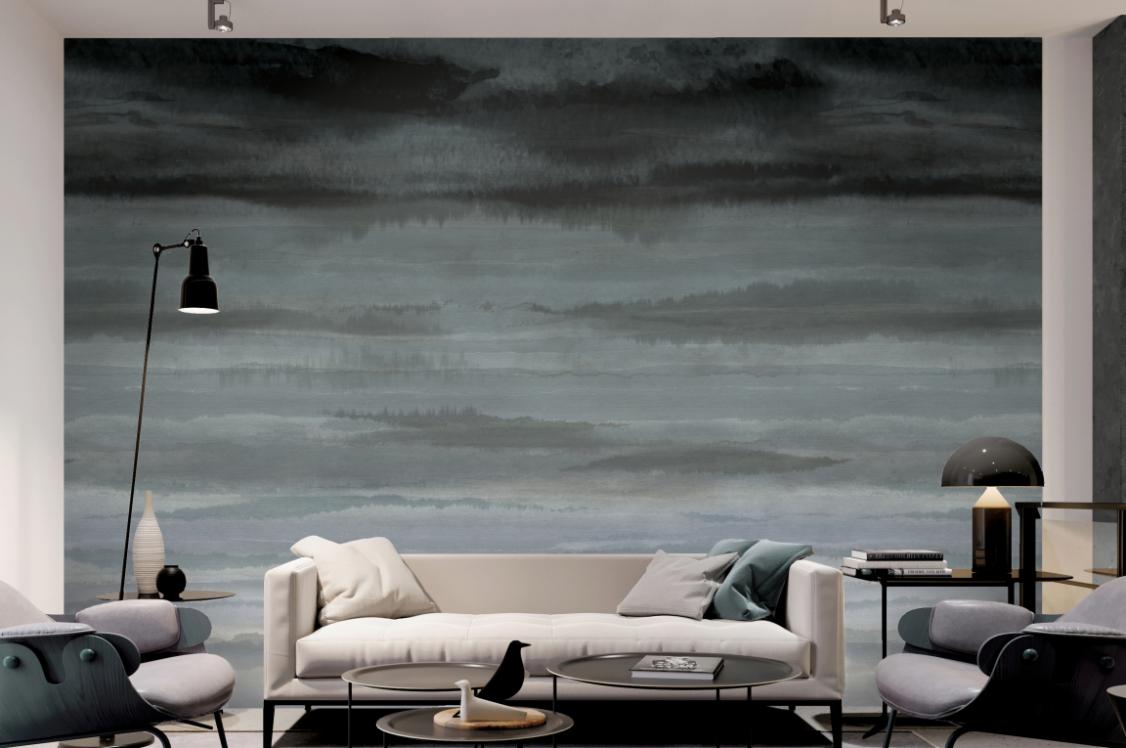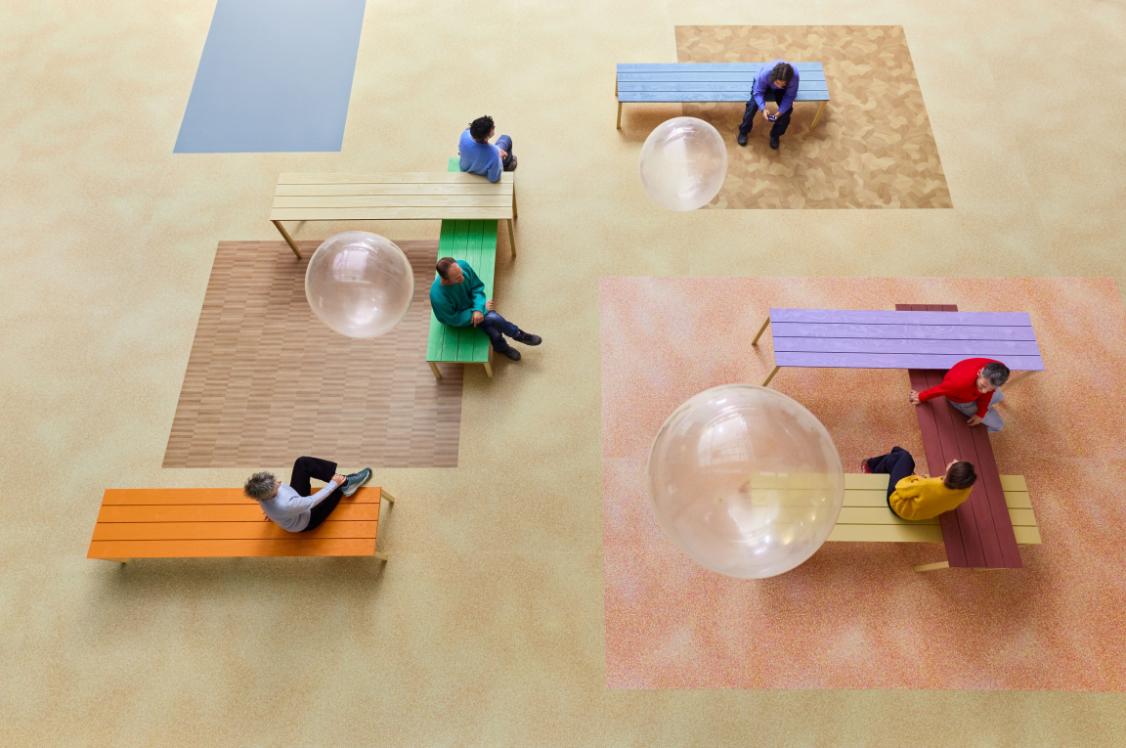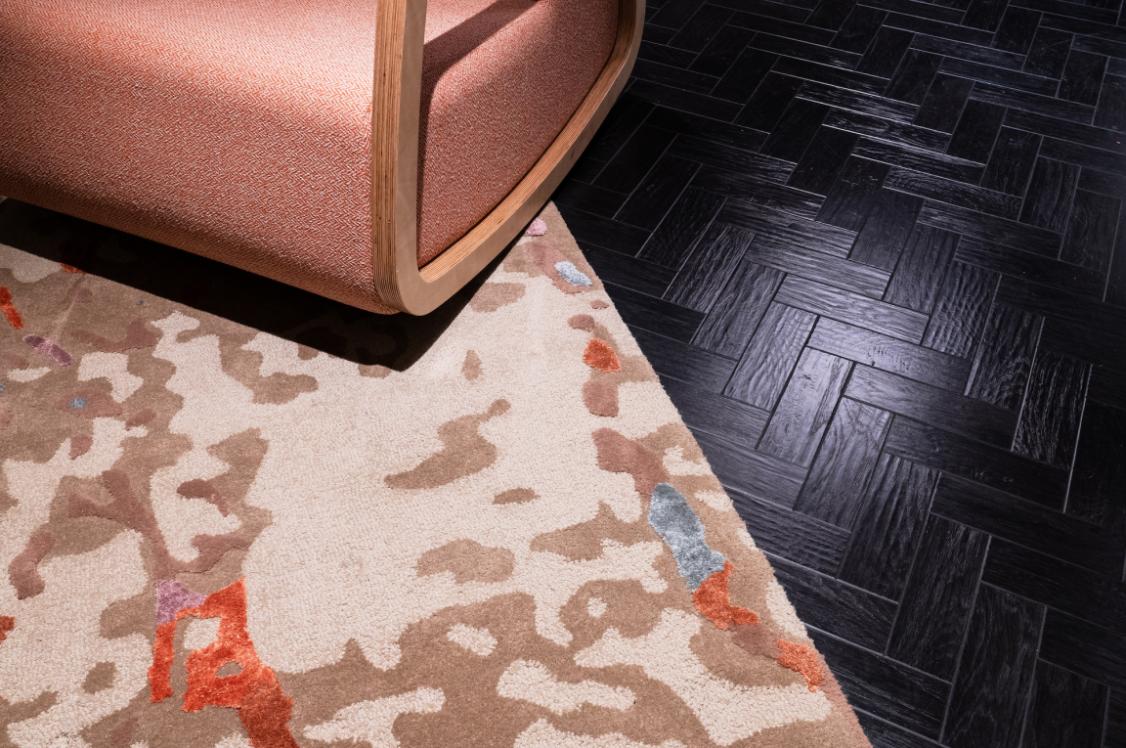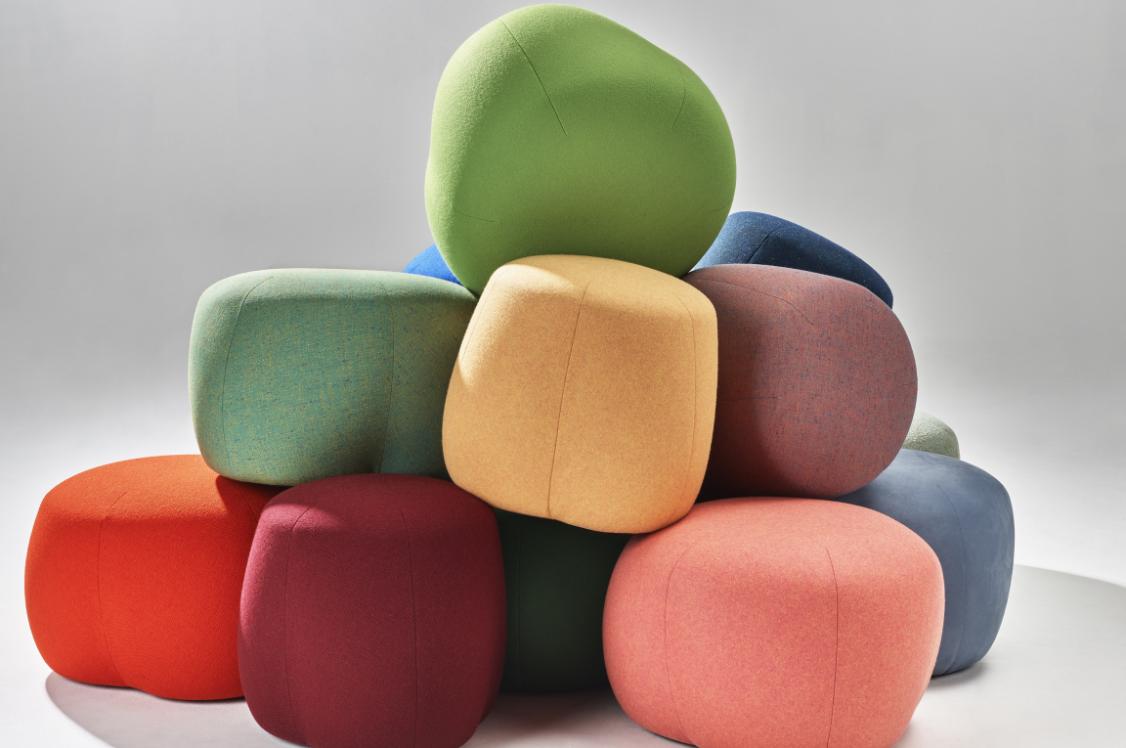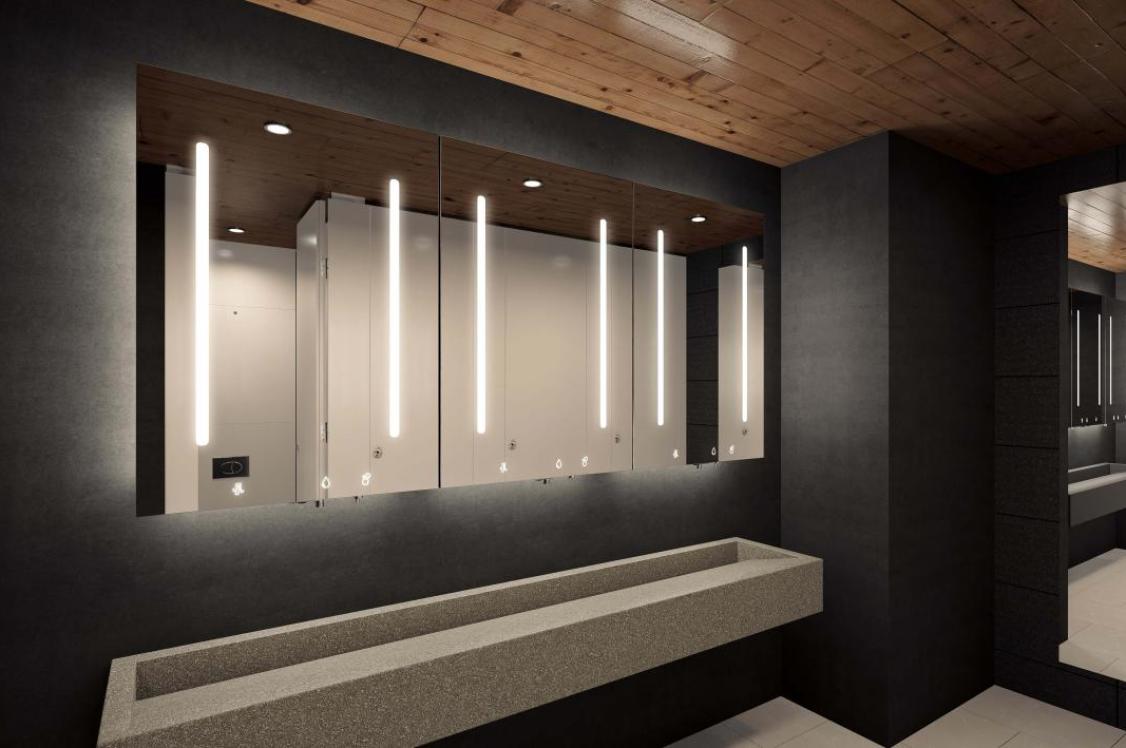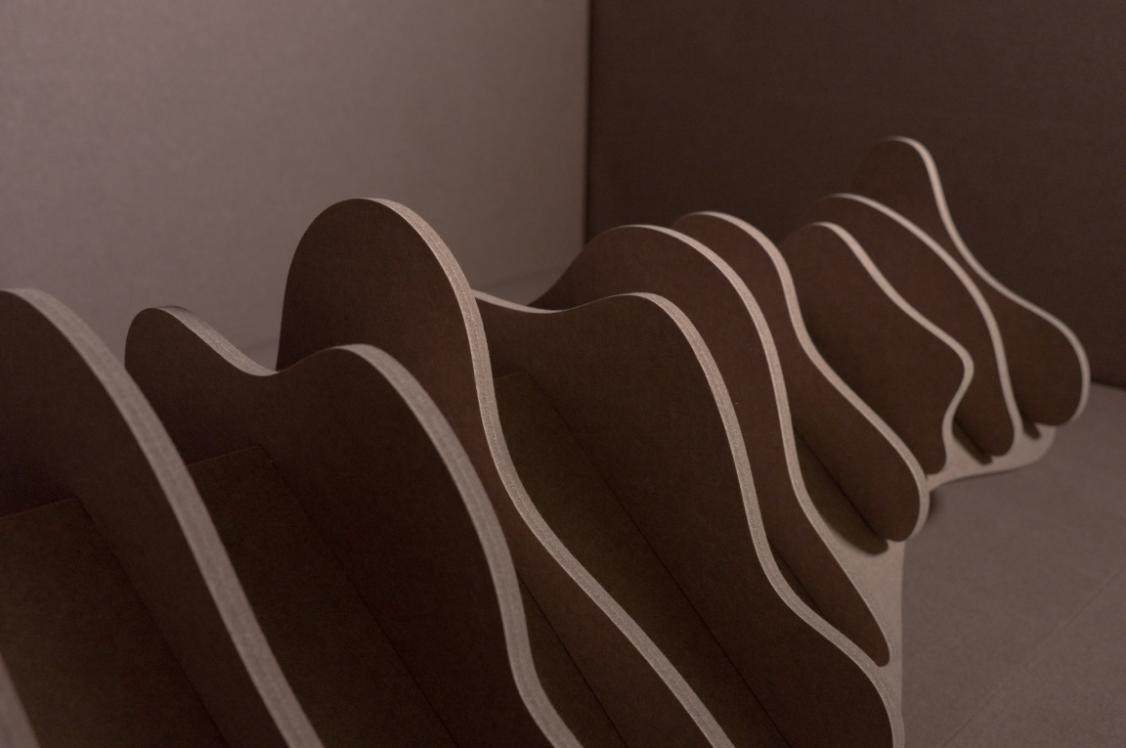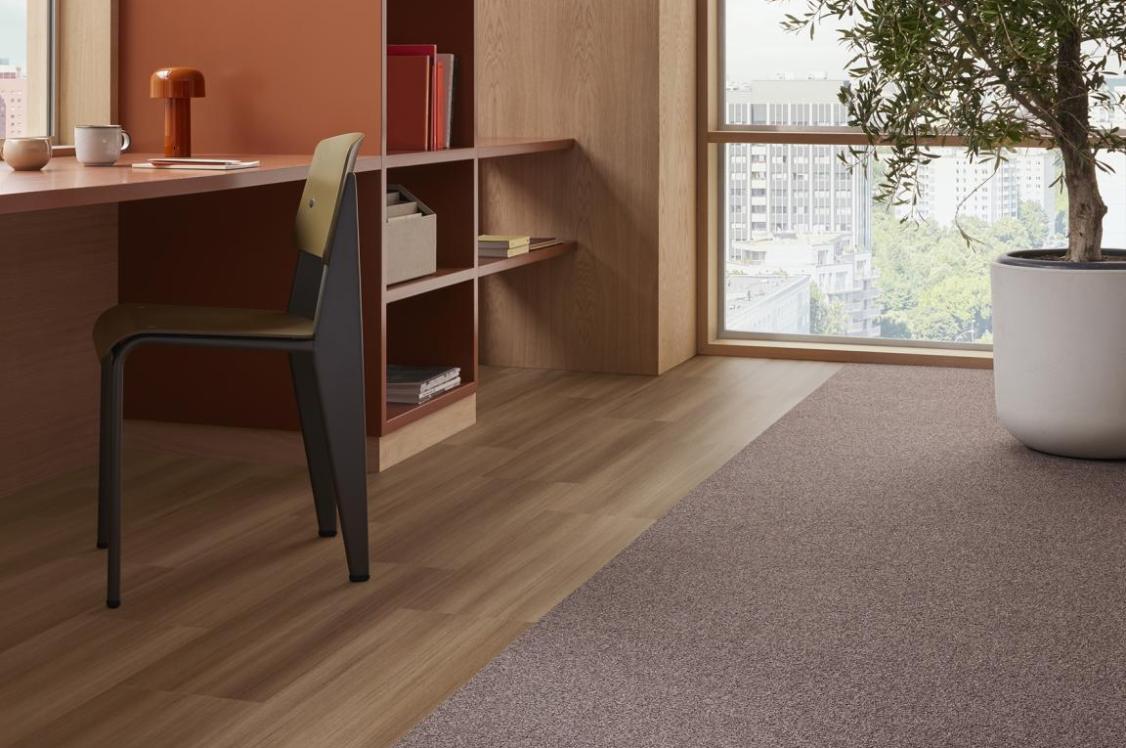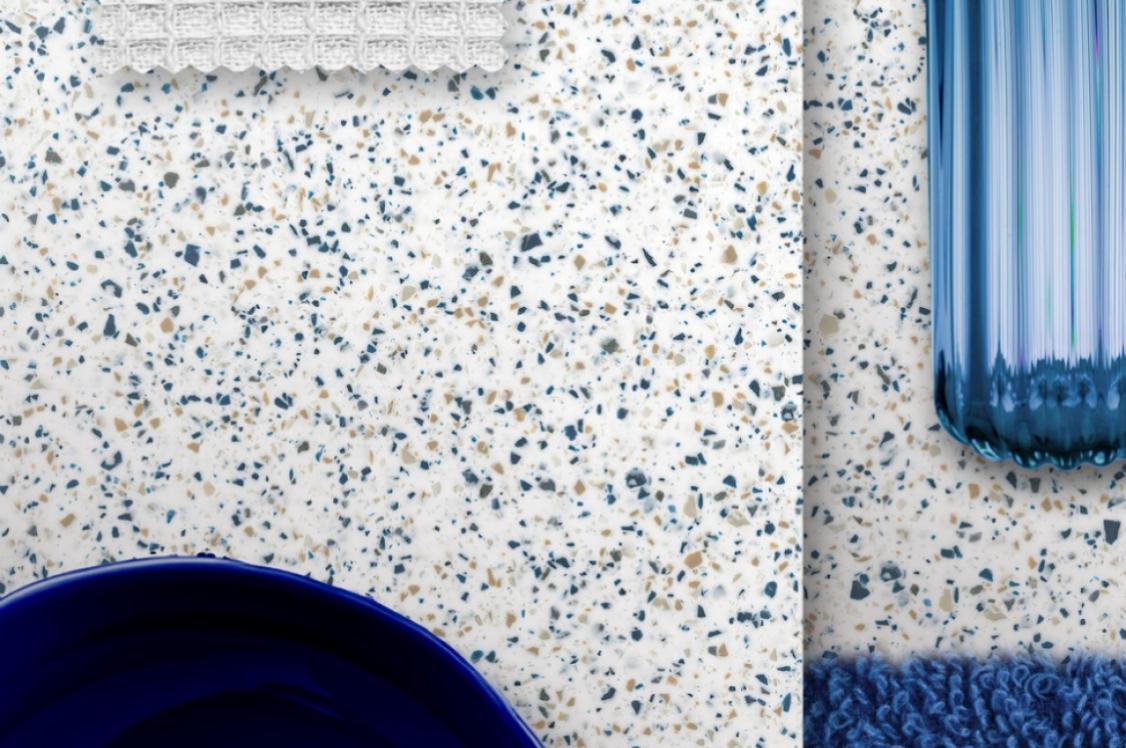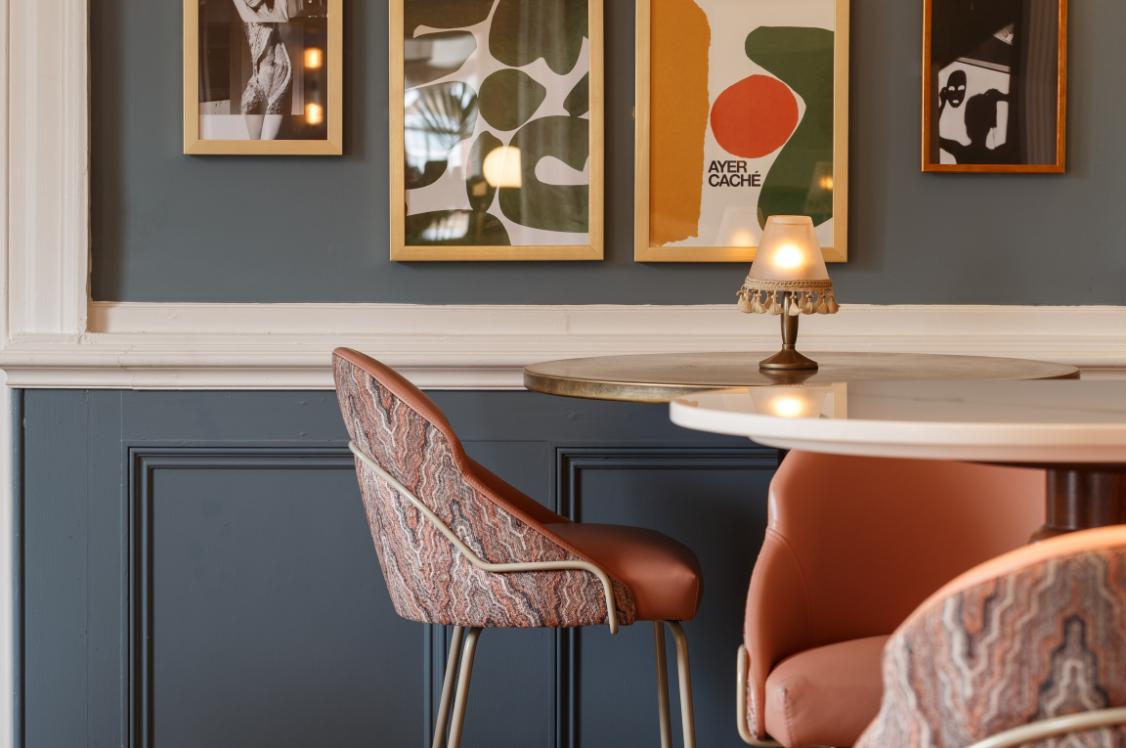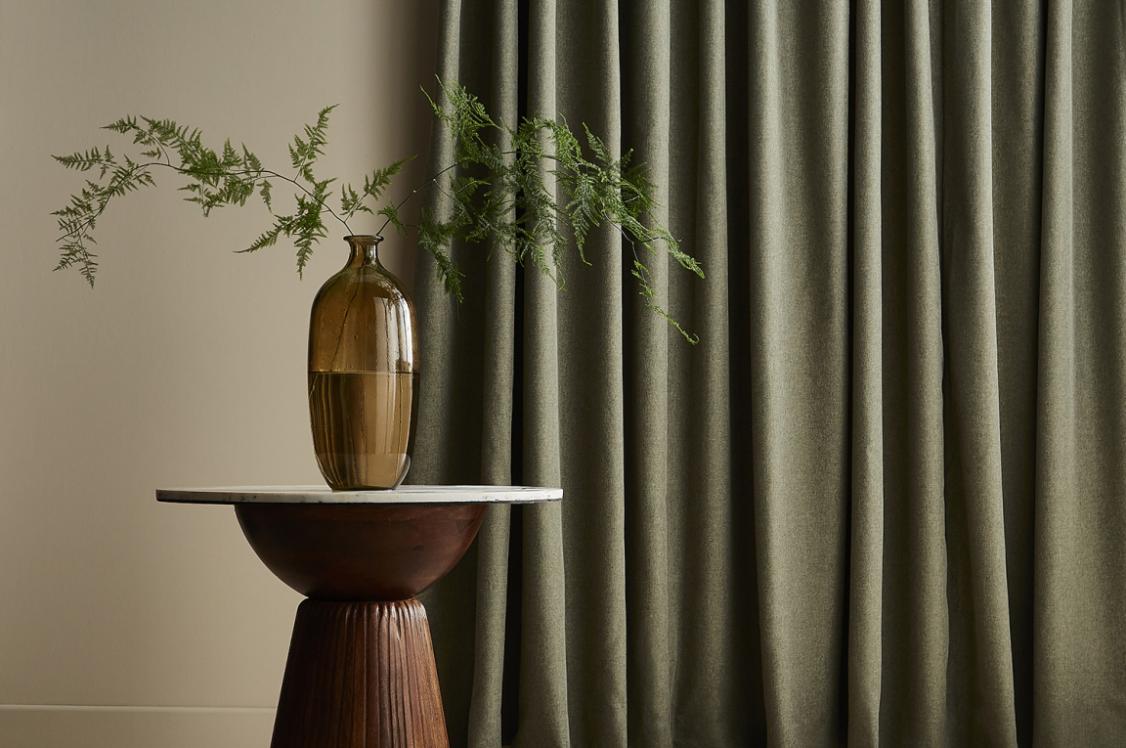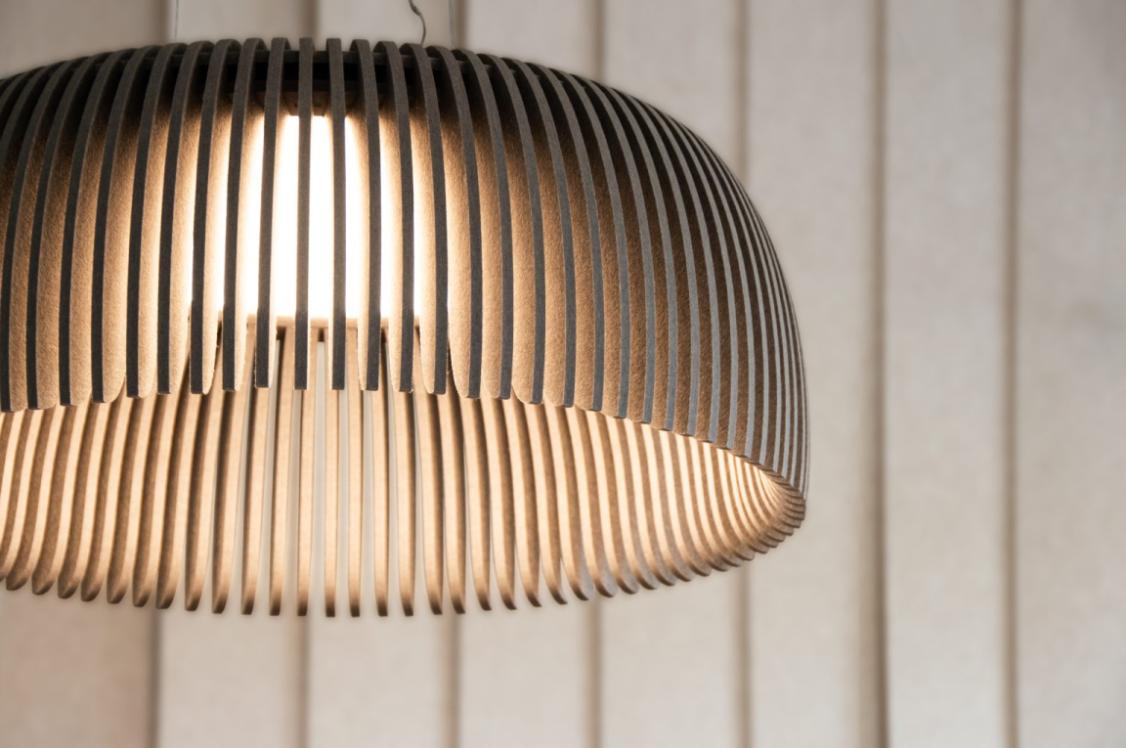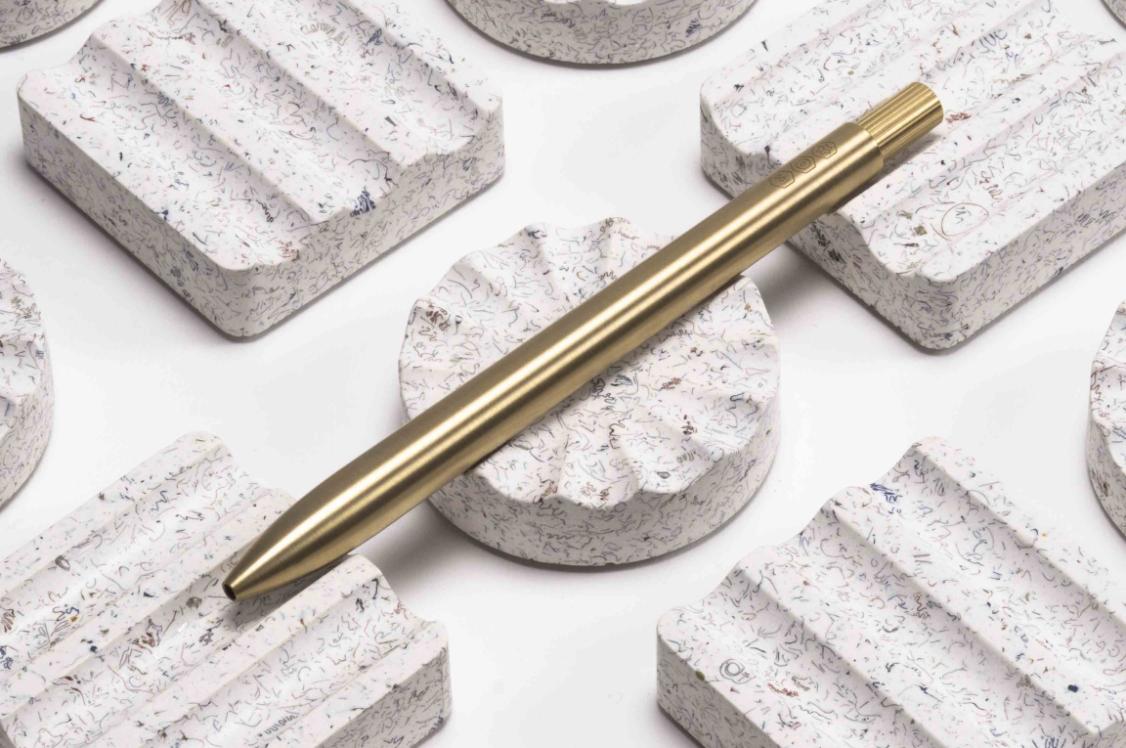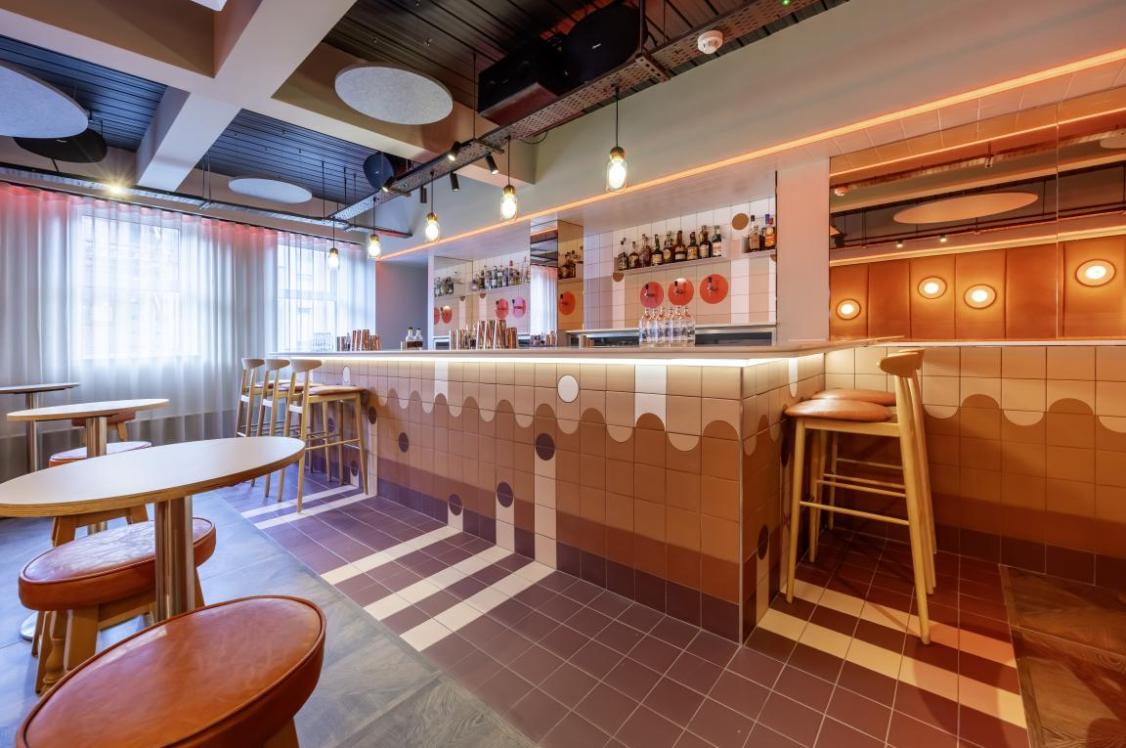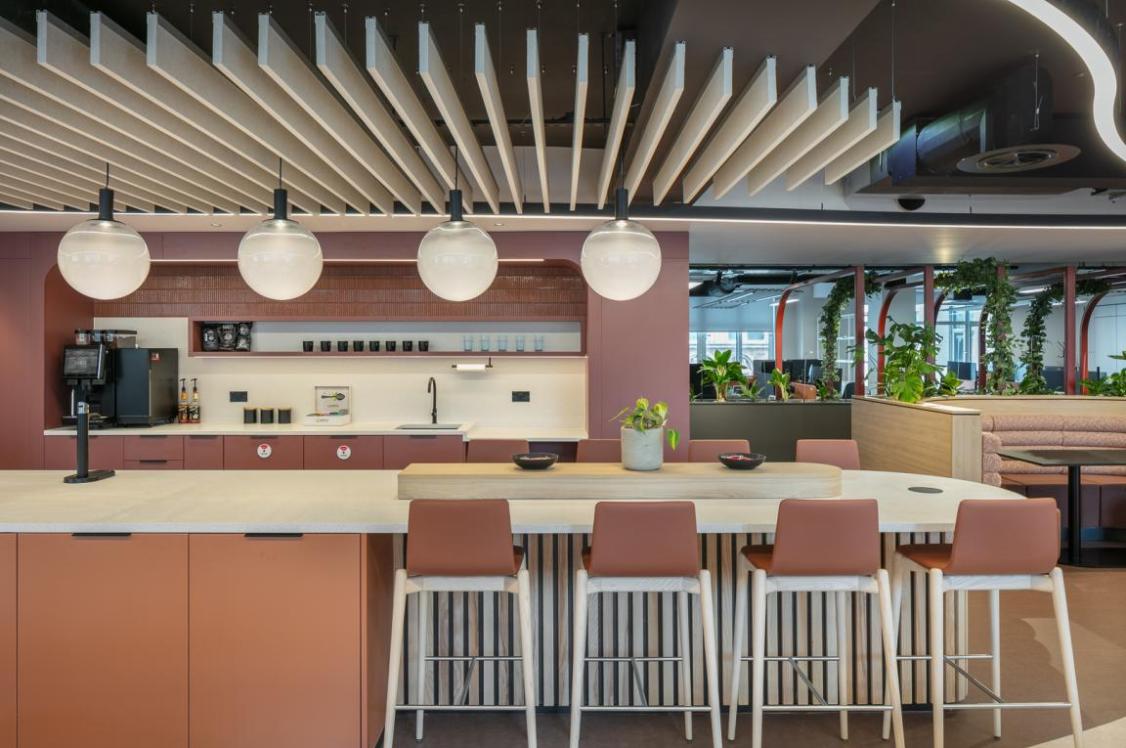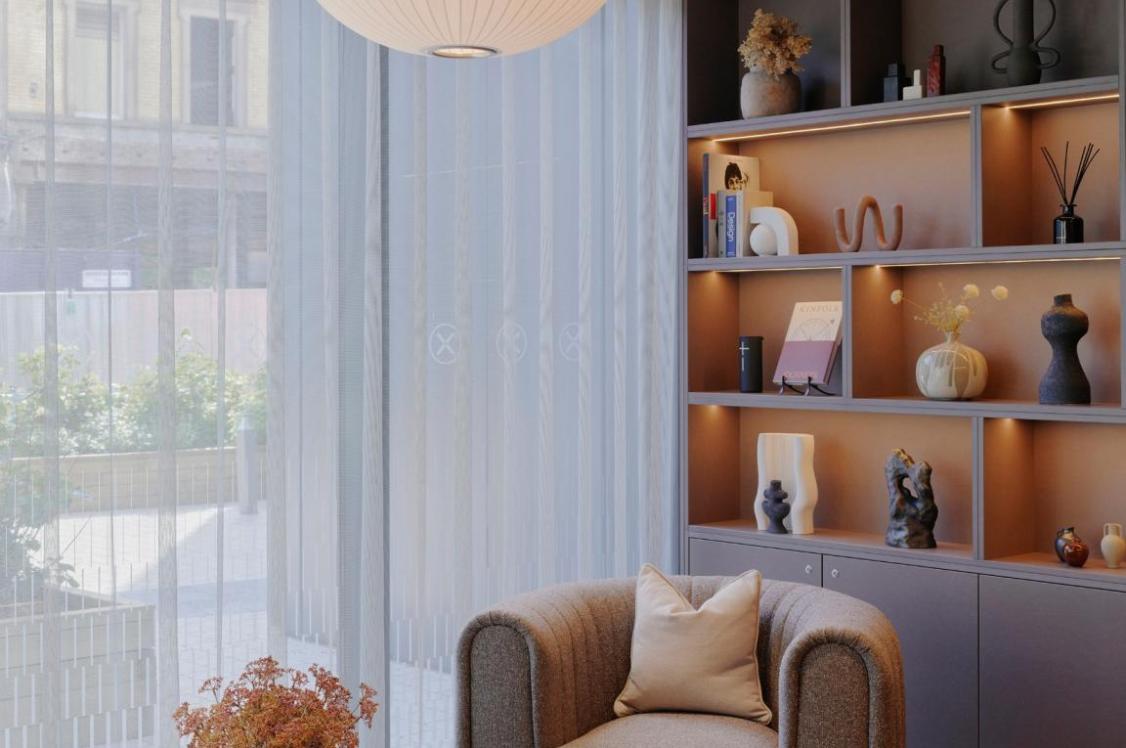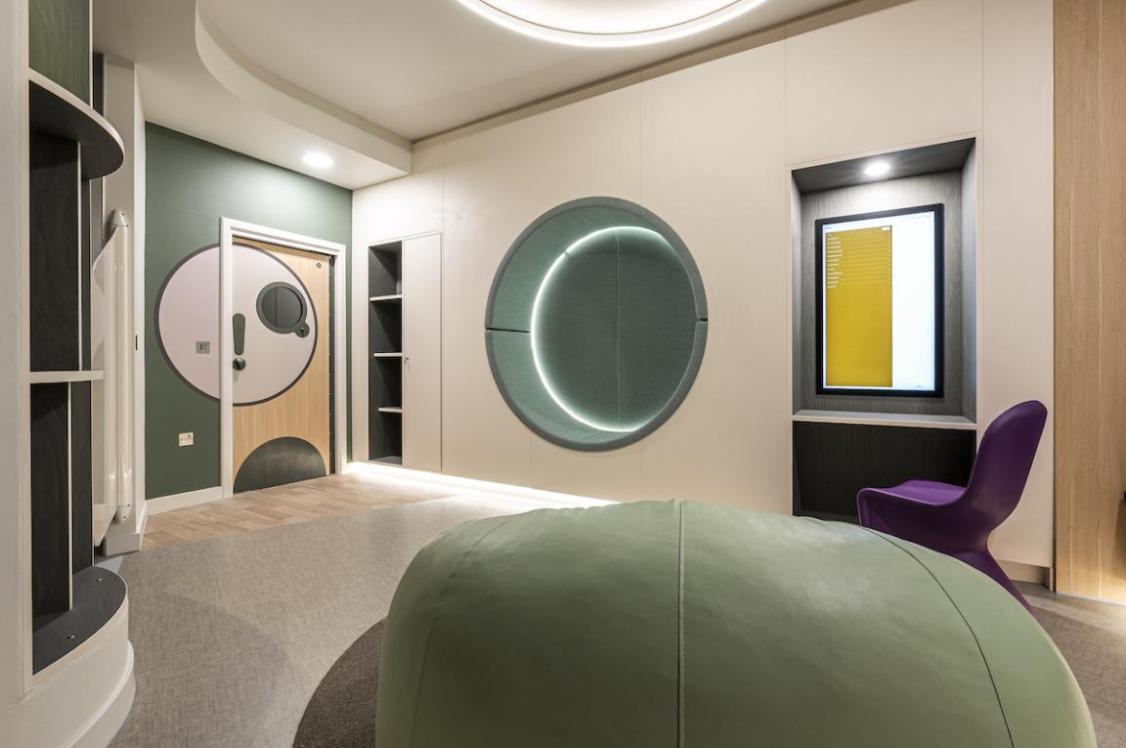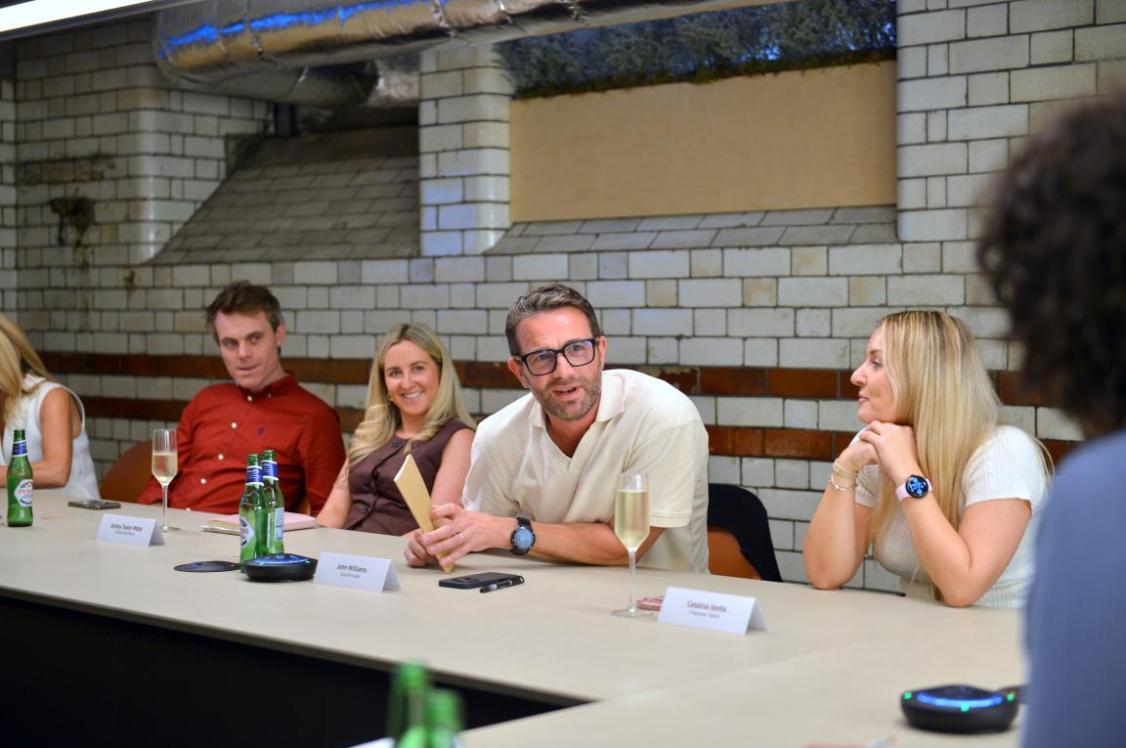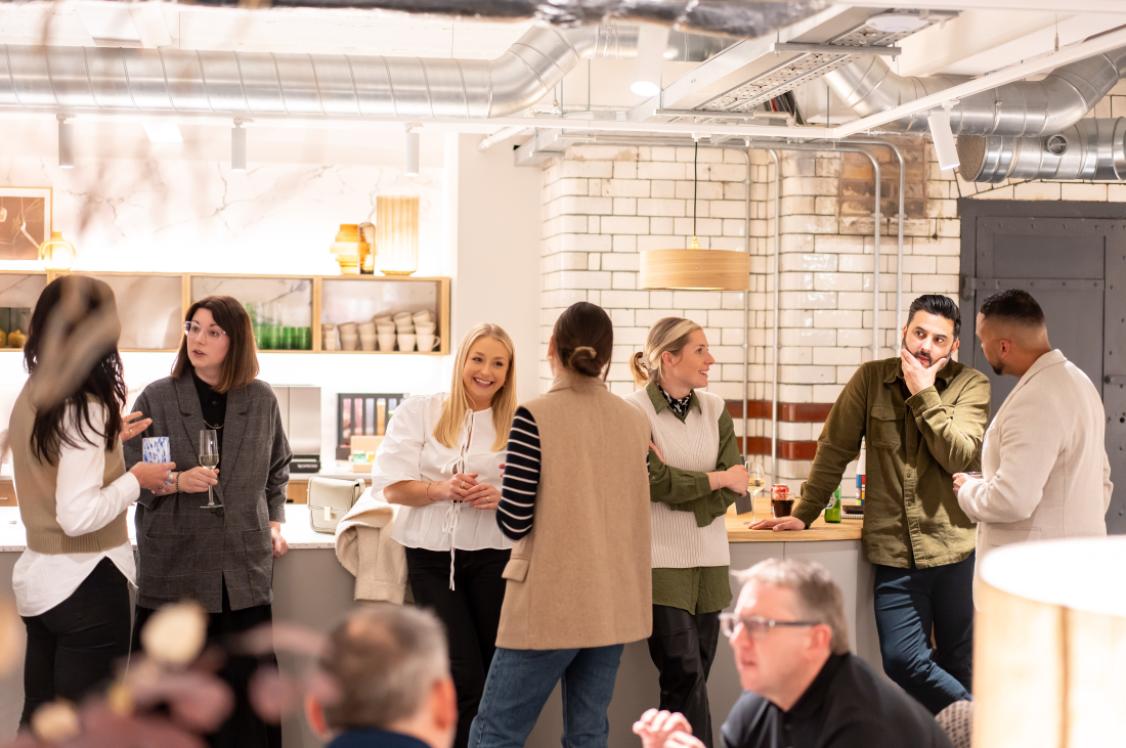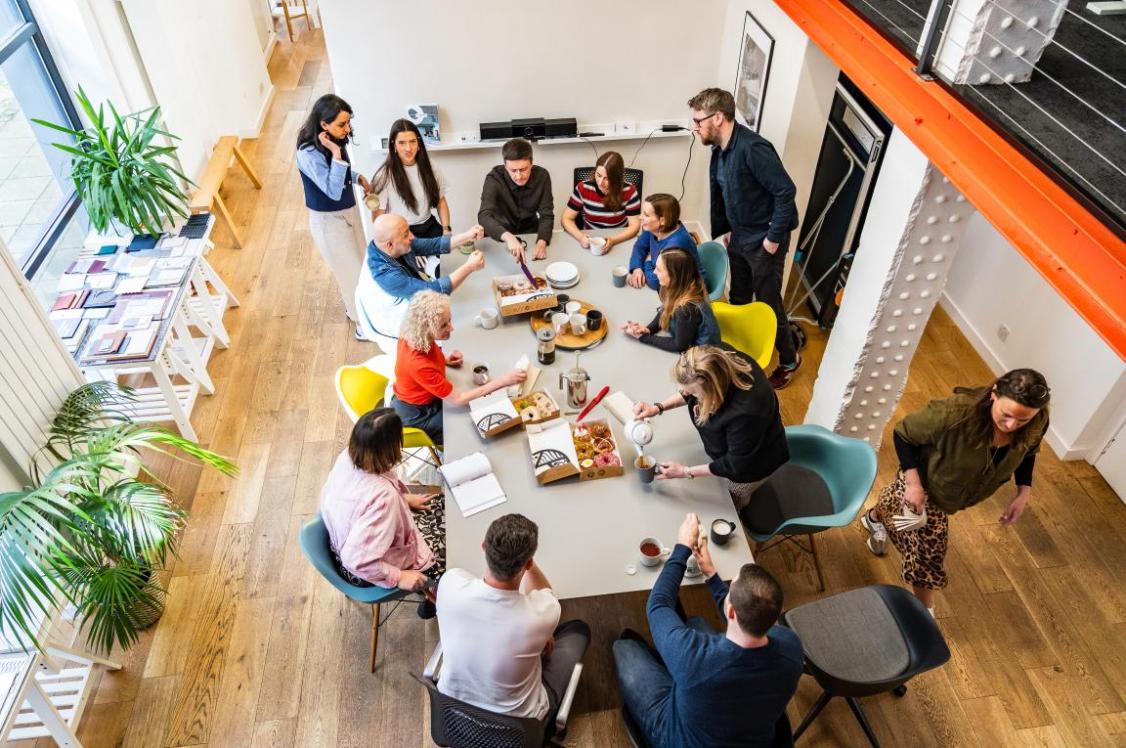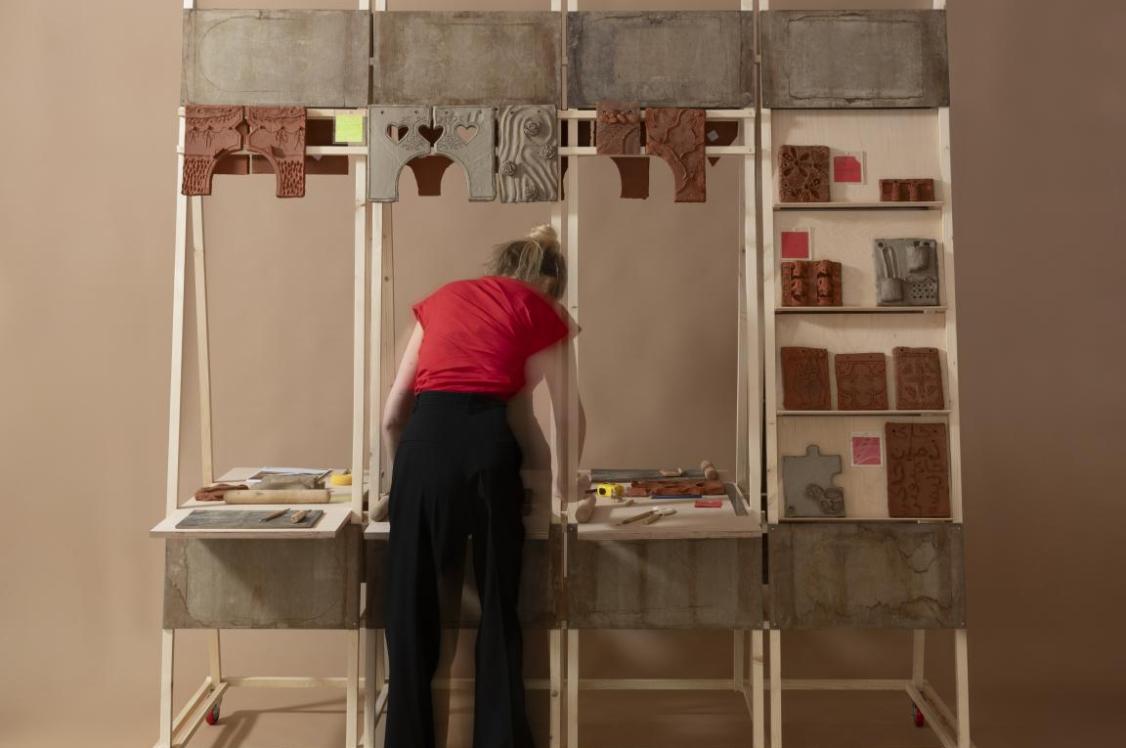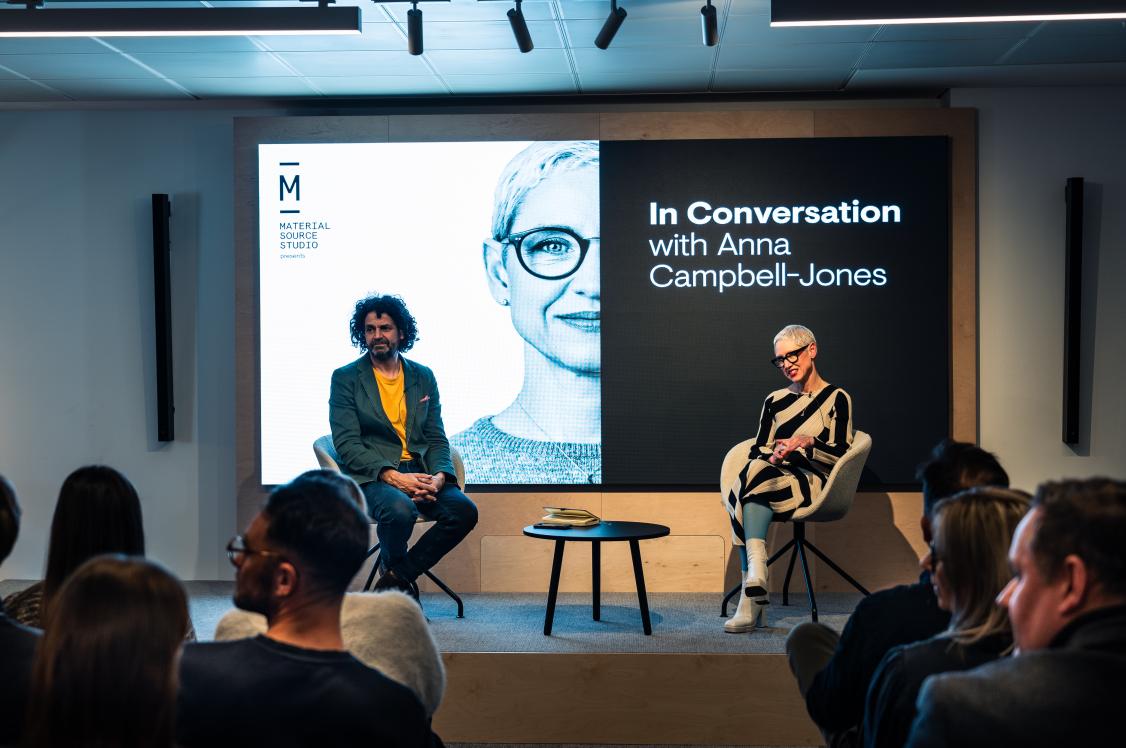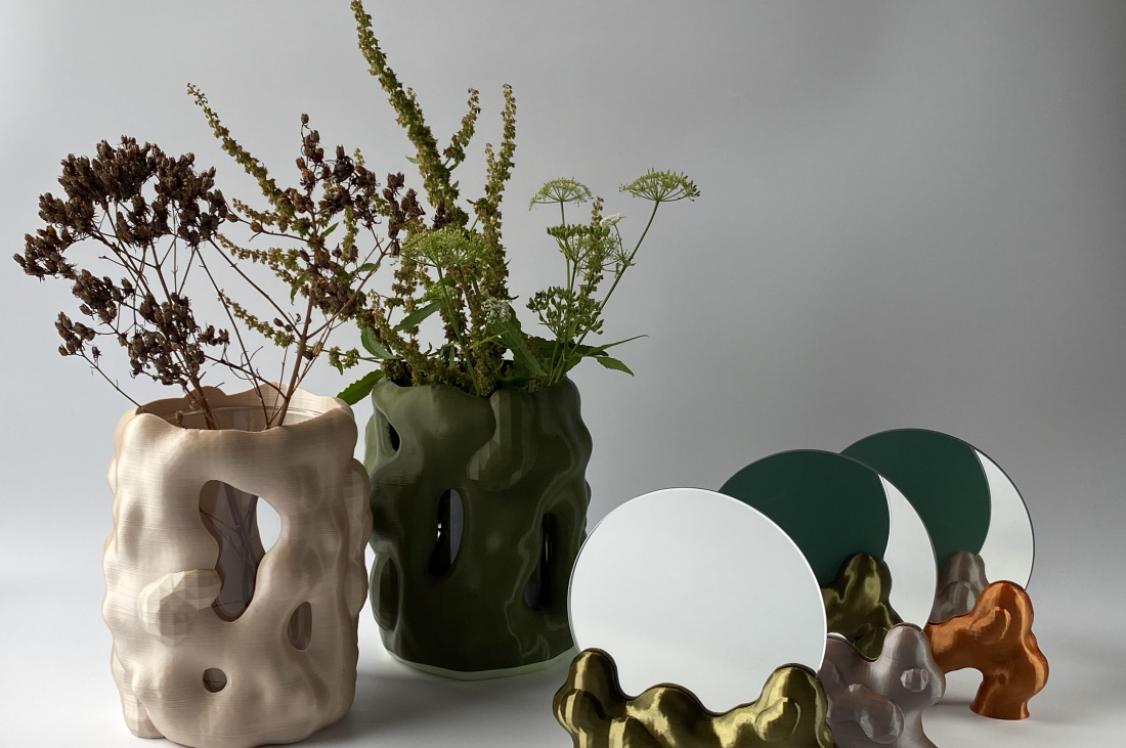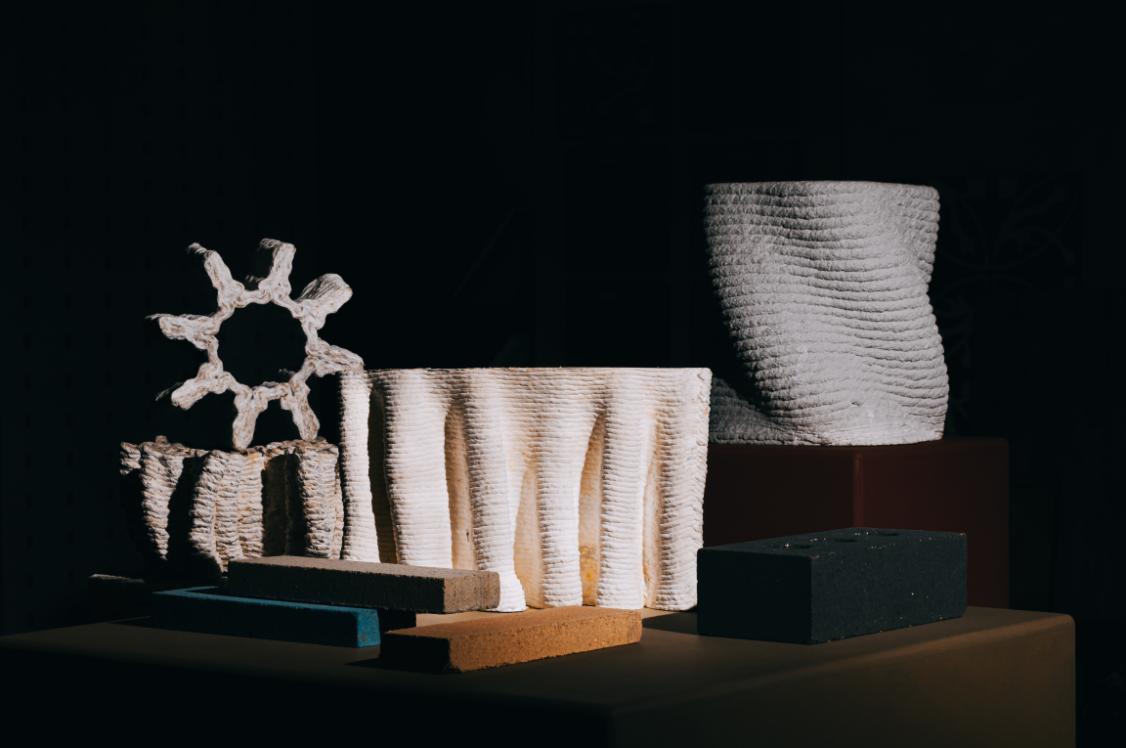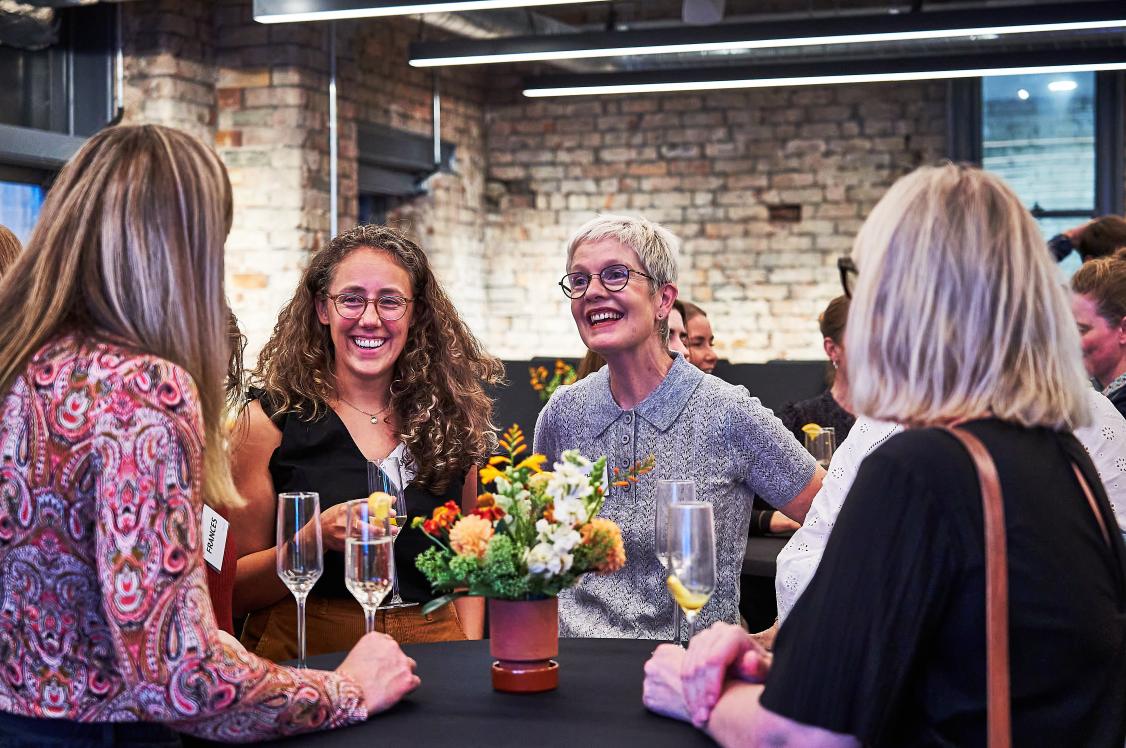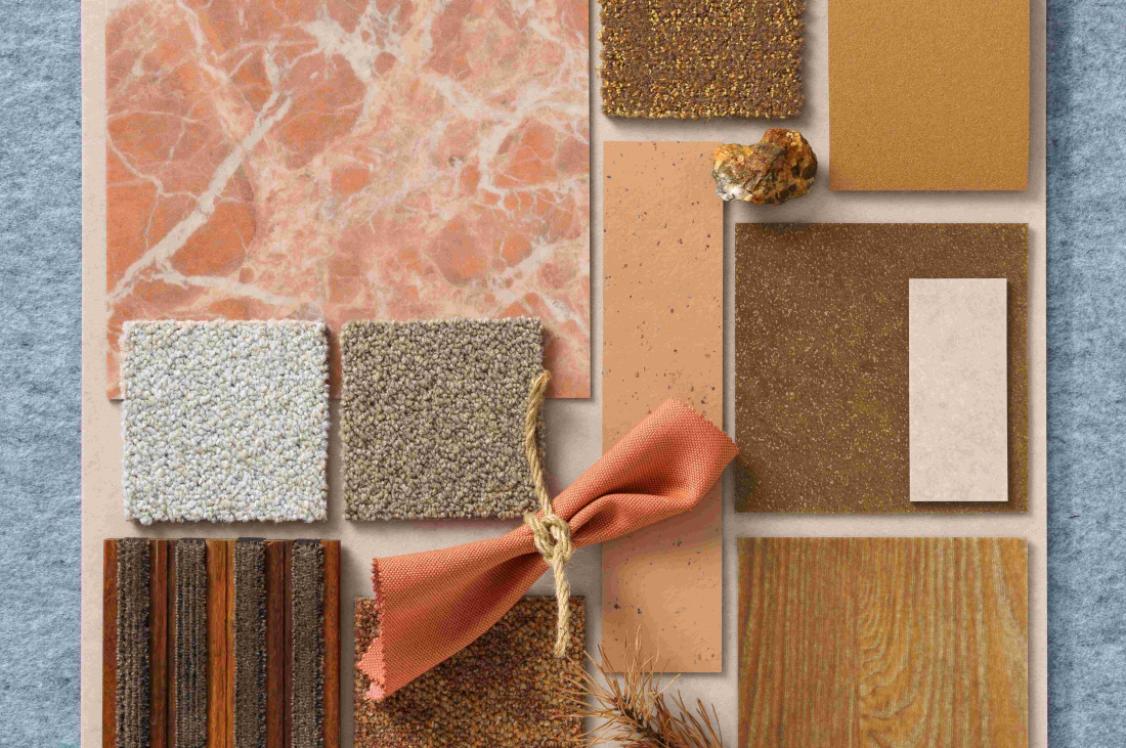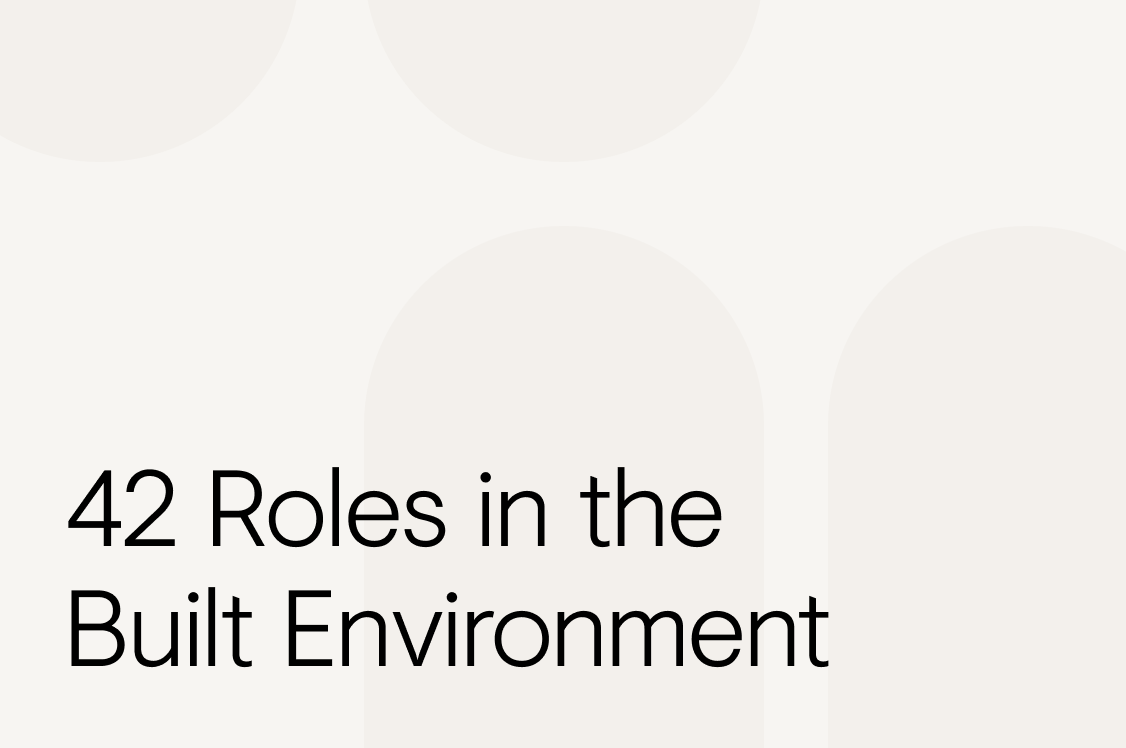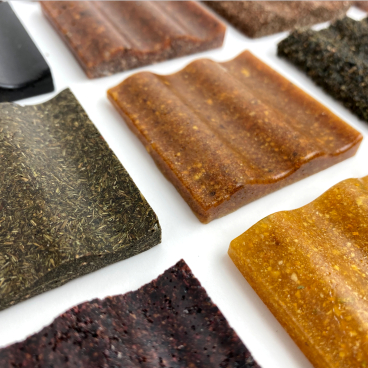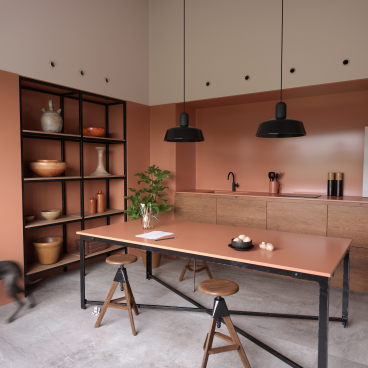Architect & author Nic Crawley on Cross Laminated Timber; the challenges and opportunities.

Nic Crawley is an accomplished architect and designer at Allford Hall Monaghan Morris. He is also the author of the book: Cross Laminated Timber: A design stage primer, which explores the challenges and opportunities of working with CLT.
For a decade, Nic worked on developing AHMM’s award-winning and broad ranging sustainability agenda. He now sits within the Technical Design Group, dedicating his time to diverse issues around material use, research, innovation and better ways of working; making buildings and sharing knowledge across the practice and beyond.
With this in mind - plus being fans of Nic's book here at Material Source - we were keen to learn how CLT can contribute to a more sustainable future.
Firstly, please can you tell us a bit about your role at AHMM?
"I'm an architect and designer, and spent a long time running teams and projects across all sorts of types and scales. Alongside this, I helped develop AHMM’s diverse (and award-winning) sustainability agenda, and led this work and associated research as Head of Sustainability for around 10 years.
"My current role is quite different - within AHMM's Technical Design Group including materials, research and innovation and how we work and share knowledge better, all in terms of product (what we design and specify) and process (in terms of what we do and how we work).
"It’s a diverse role that encompasses really important strategic industry issues, sector specific challenges, practice support and inputs to a wide range of projects, all down to the smallest level of nerdy detail. And I’ve been able to do a lot of research into different materials.
"In short, I spend a lot of time working on how we can do things better."
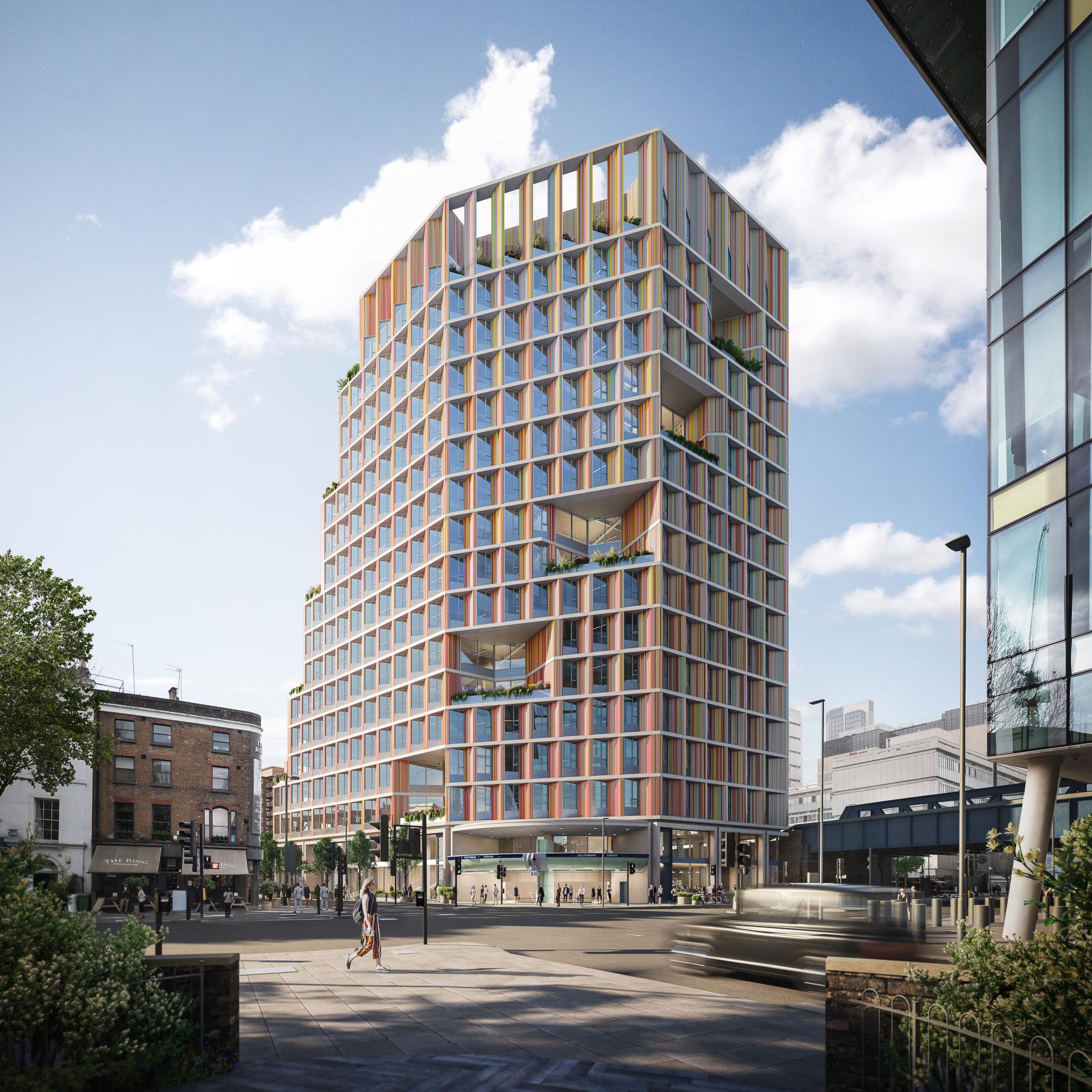
Proposals for Southwark Tube Over Site Development. Credit: AHMM/ Hayes Davidson
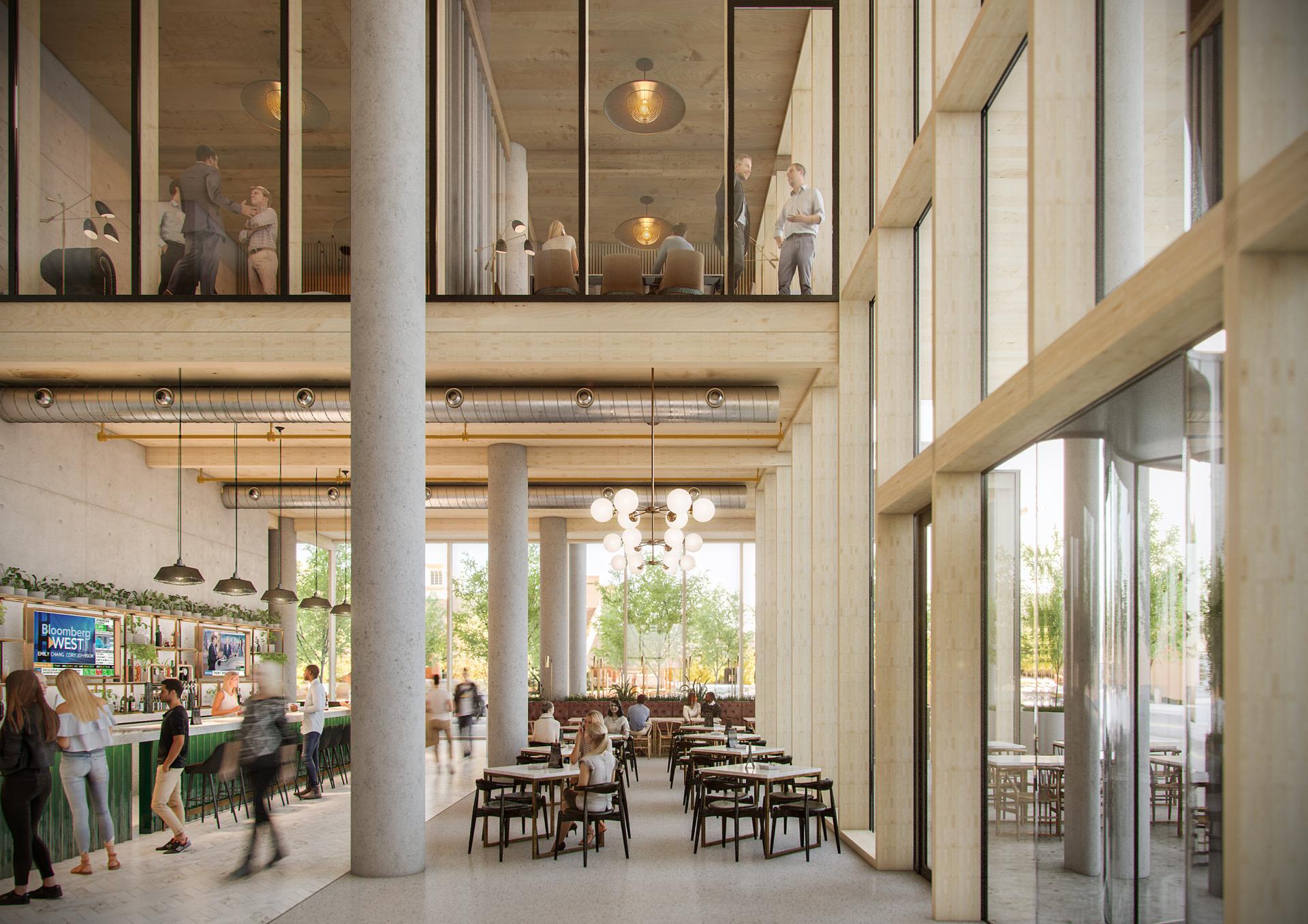
Proposals for new hybrid office, central US. Credit: AHMM
You authored a book called Cross Laminated Timber: A design stage primer. Can you please give us an overview of what it’s about, and what led you to the world of CLT?
"The book is an accessible introduction to a rather neat but challenging material - one that has been around a while and is very rapidly becoming increasingly sought-after and available all over the world, but is not yet widely understood. It was written for the project team, not just architects, to enable them to better understand the challenges and opportunities of designing and building with CLT. Writing it was a way of sharing knowledge and experience to enable better decision-making about materials use across the construction industry.
"I've spent a lot of my career looking into how we design more appropriately to better address the contemporary challenges outlined briefly within Chapter 3, from building design to construction through to use. I first came across CLT while in Austria researching high-performance buildings around 12 years ago - it seemed to be a great potential solution to many of those challenges then, and, the more I've learnt about it since, the more convinced I am that that is still the case, as those challenges have - in many cases - increased. In many ways it may be the ultimate modern material…
What are the main benefits of using CLT?
"There are a few… Maybe its potential for building better in so many ways is the biggest draw.
"It's a visually appealing, self-finished, renewable and stable structural material that can be used in many different ways, on its own or with other materials, so can be worked really hard - integrating architecture and interiors with engineering with all sorts of benefits. Importantly, it’s very low impact by comparison to anything else available that can be used at scale. We must rethink our collective response to the climate emergency and there is an increasing awareness of the broader range of consequences of what we design and build.
"It can be a great-looking solution when exposed, full of character, natural pattern and variation. Whether exposed or concealed, it provides a far quicker, safer, very much smarter way of building that makes good use of digital design and modern manufacturing potential and the tolerances and quality advantages are huge - there's no on-site bodging and prefabricated panels can be installed quickly, up to 50m2 in a single lift, by small teams to create a better environment for follow on trades. (As such the safety, quality and social issues relating to its use are huge - from providing a better and safer working environment for site trades and the resultant quality benefits, to reduced noise and disruption to neighbours, and reduced traffic though our cities.)
"I'm really into the grain of the fibre you can see, the panels reflecting the growth of trees over recent years and keep coming back to the fact that this really is a product of our times - invented and developed relatively recently, made with trees planted in my lifetime, processed using really smart tools and able to help address so many of the really, really significant challenges that we need to better acknowledge now, and for future buildings.
"All that said, we mustn’t lose sight of other aspects. There are some challenging performance aspects that are not widely understood and there’s work to be done understanding and designing in response to these so they can be managed through construction and use."
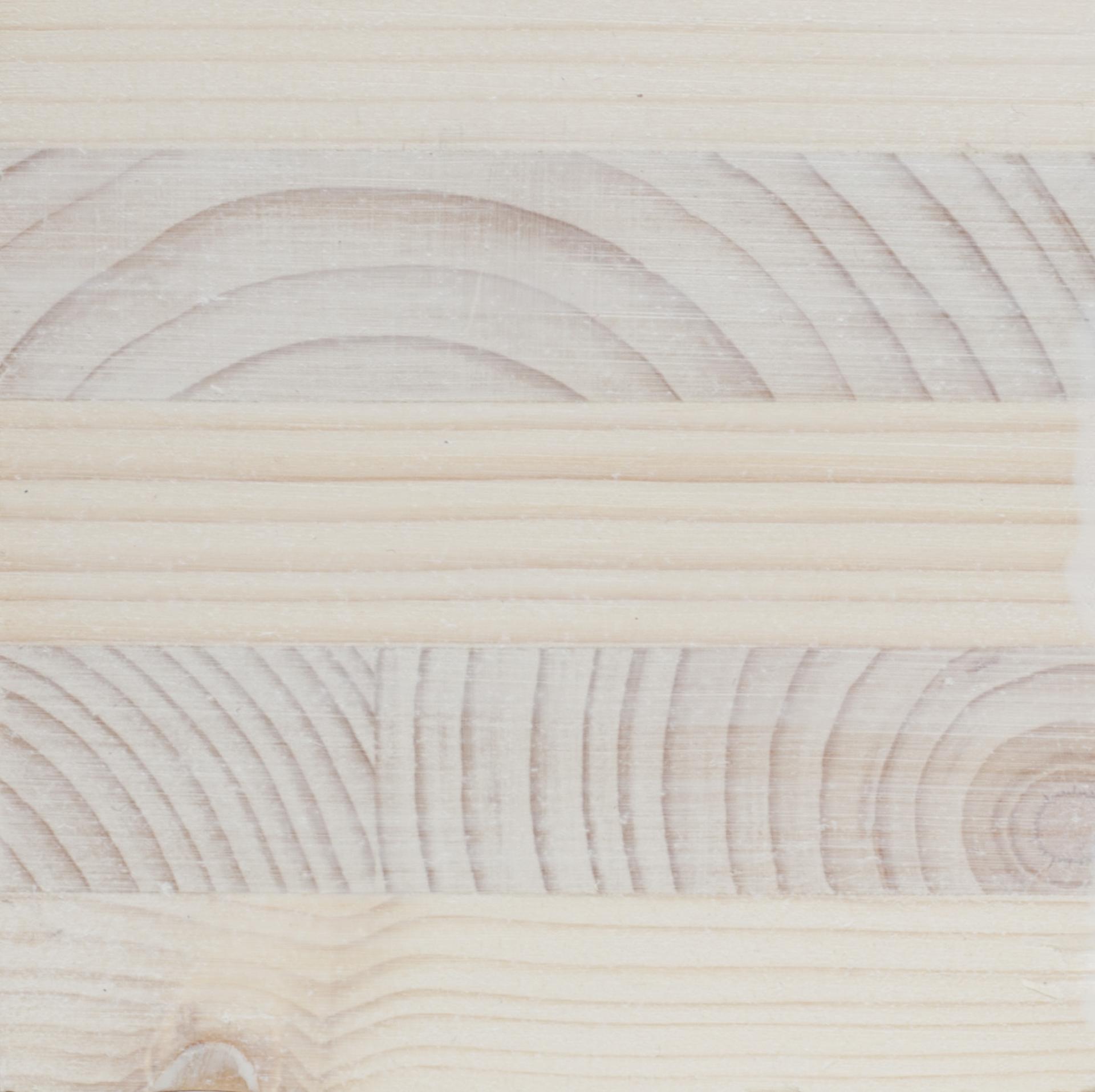
Credit: AHMM

Credit: AHMM
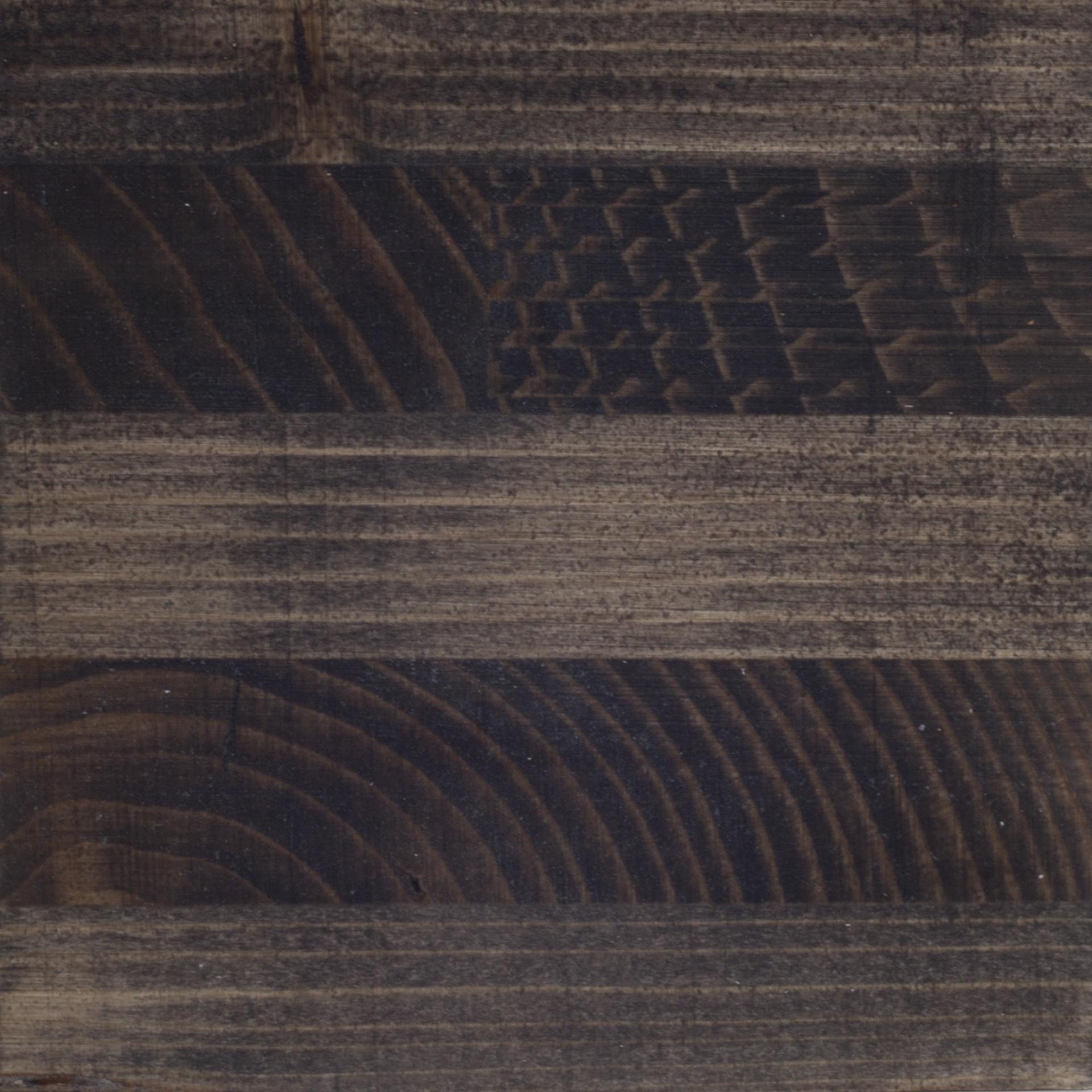
Panel ends, treated: white wax oil, black wax oil (both single coat) plus softwood lye. Credit: AHMM
How did you go about researching the book?
"This is an ongoing personal interest, building on project and research visits, conferences, contact with all sorts of specialists, an in-depth internal research study at AHMM of precedents and key issues, and really importantly, our own diverse past and ongoing experience across different building types, built or otherwise.
"Really learning about the material itself led from researching the machines and processes used in manufacture to working the material and plenty of CLT got cut up, painted and stained, screwed and knocked around, set alight, left exposed on rooftops or submerged in water in the process.
"A lot of time was spent researching use, current and future projects all over the world, considering risks, possible solutions and likely future development.
"One of the high-points of the process was engaging with so many others, designers, engineers, contractors, manufacturers and specialists who proved to me that there is an awful lot of experience and knowledge out there if you know where to look (and some brilliant photographers whose contribution is so important to how the book looks). Some of them contributed chapters to the book and everyone was excited about the potential for the material and willing to share experience, often at great length, which was a real treat and something I'm very grateful for. My big regret was only being able to include a fraction of the material and intelligence from those who contributed within the book."
CLT seems like a wonder material, but it’s not been widely adopted in the UK. How do you see this changing to it being more widely used?
"We are without doubt in a transition period...
"Early adopters are picking up from CLT innovators but there is still so much potential to be explored (and therefore opportunities for forward facing designers who have the energy and ambition to push things onwards). And as project teams develop more experience and understanding, we'll move to resolve and share solutions to technical challenges and confidence will increase for investors and insurers. Teams won’t need to spend so much time investigating details and performance from first principles and this will drive use. Who knows, this might even lead to UK produced commercial products. There is one house so far, currently being manufactured in Scotland…
"What has changed in the last decade is an increasing collective awareness of the consequences of what we do and beyond embodied materials impacts, a shift towards how our values may be expressed through our buildings in a way that impacts their financial value now, and in the future."
How have you married your interest of CLT with your work at AHMM?
"AHMM are always looking for smarter ways to do things and fully supported the writing of the book as a means of sharing experience and promoting a broader conversation about how we build. My own research, experience and understanding has been helped by, and in turn contributed directly to, that of project teams so everyone has benefited and this has ultimately led to greater insight being applied to our projects.
"One of the most interesting things to come from the last few years is how other product and material suppliers have been driven to up-their game, no doubt in part by the emergence of mass timber- leading to increasing innovation all round and our projects continue to contribute to and benefit from this uplift, whatever decisions are eventually made."
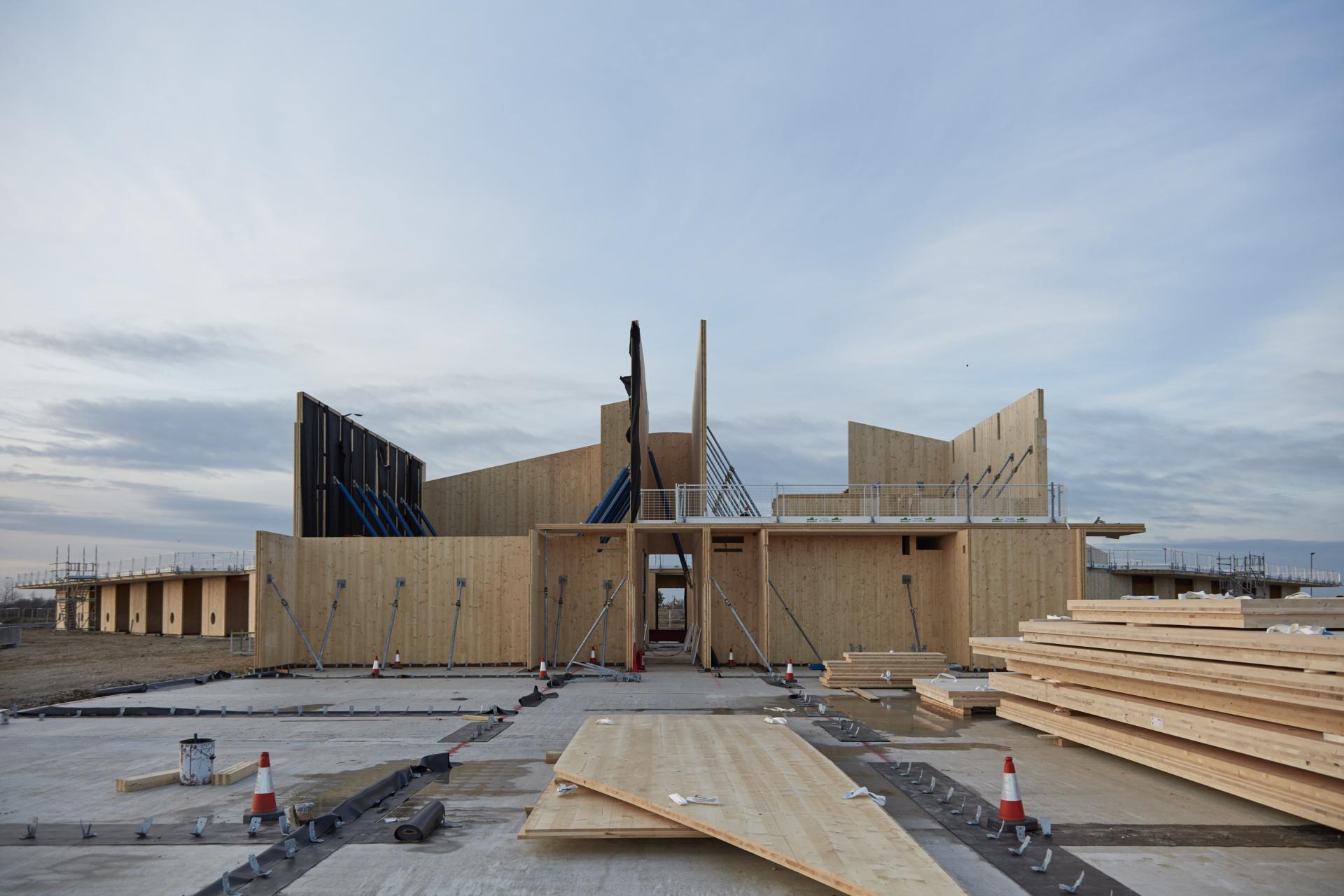
Contractor KLH on-site at Alconbury. Credit: Rob Parrish
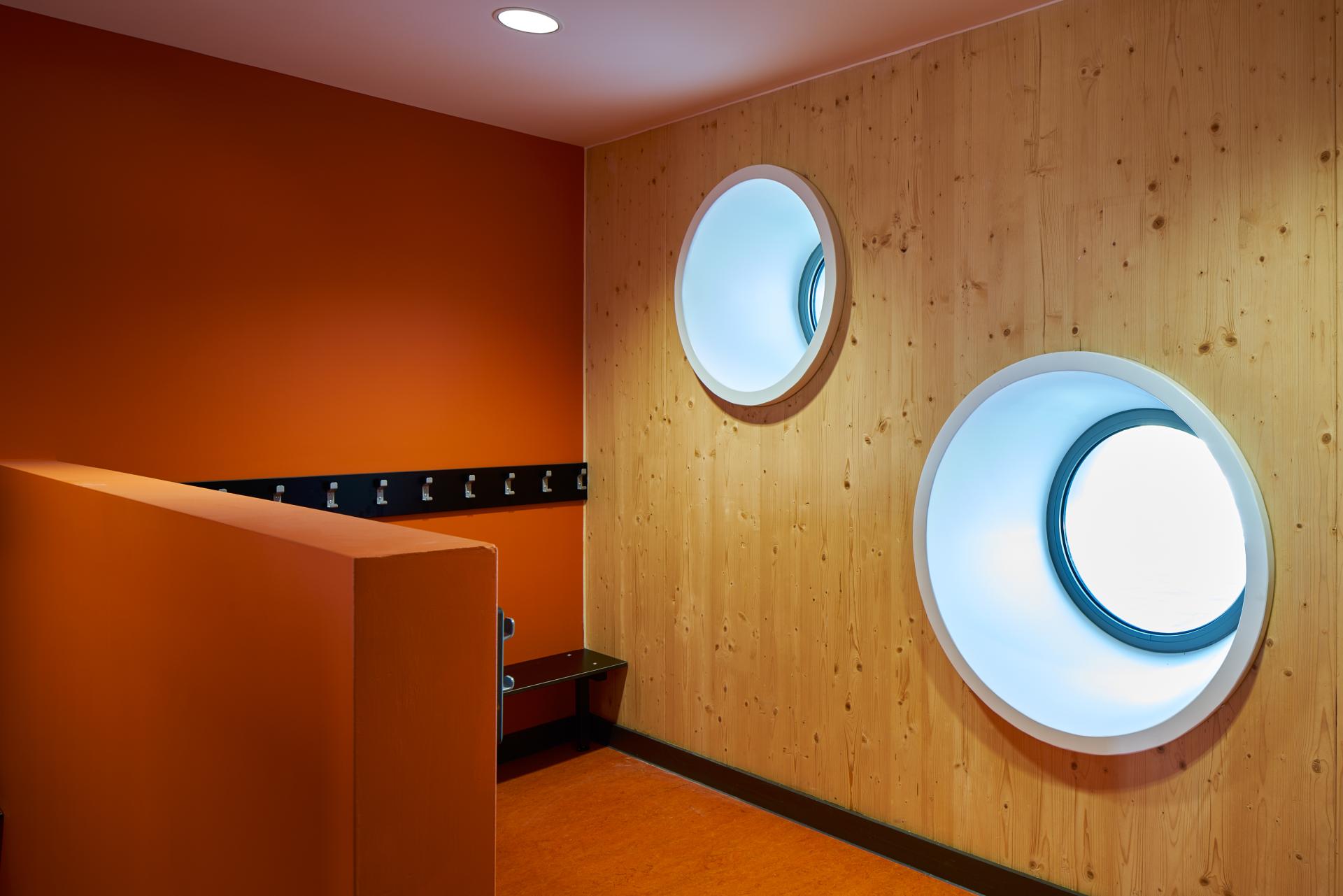
Ermine Street Church Academy. Credits: All Rob Parrish
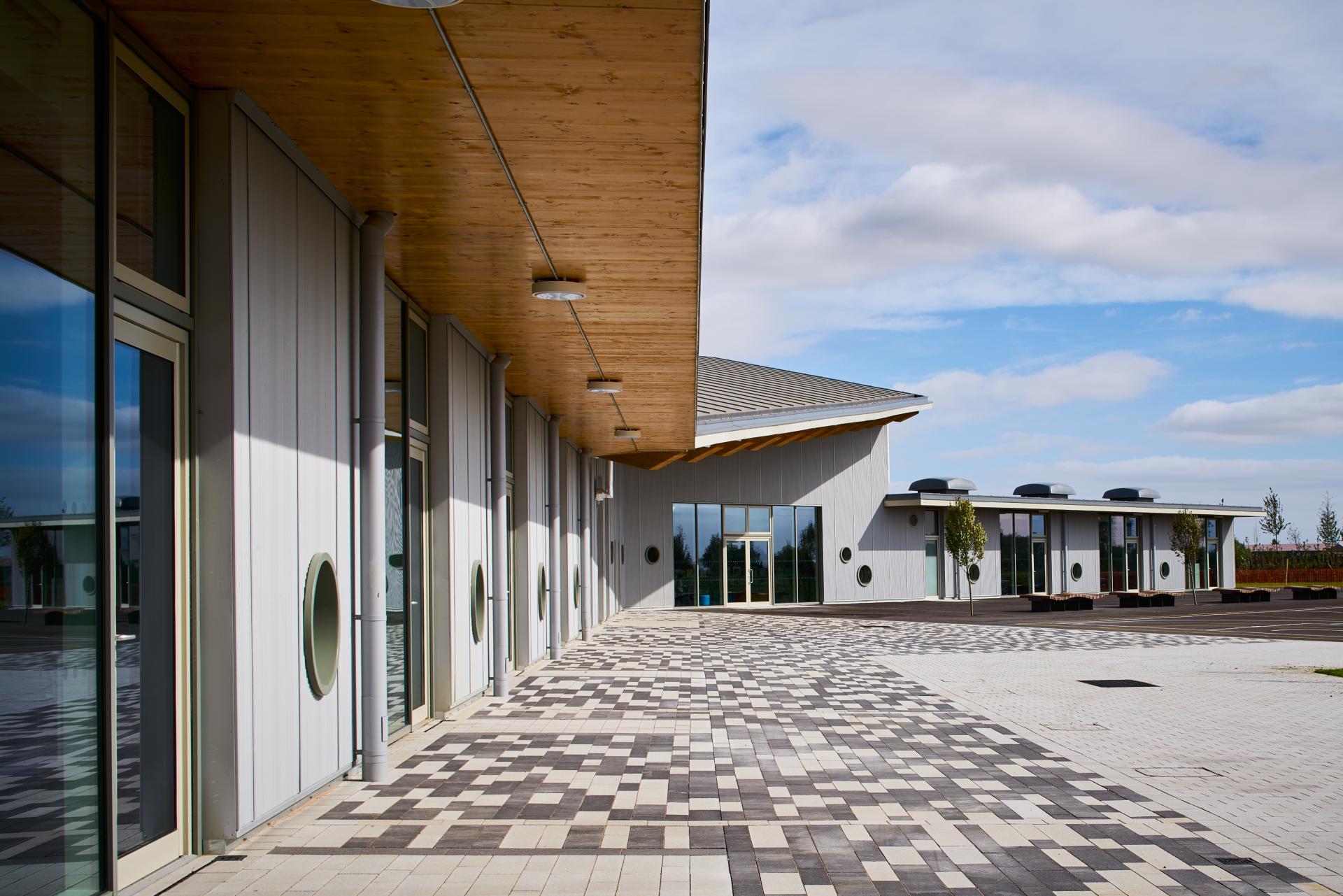
Ermine Street Church Academy. Credits: All Rob Parrish

Ermine Street Church Academy. Credits: All Rob Parrish
Is there a particular sector that could benefit from the use of CLT?
"There's much potential for use across all sectors and the potential to make significant headway for medium rise, high density buildings.
"However, because of the way it's manufactured and supplied, CLT is less accessible or affordable in smaller volumes. There are no retail channels (yet) and there are an awful lot of makers, fabricators and designers really itching to get their hands on the material for their own projects (including myself, for a really high performance top-floor extension of my own home).
"Given CLT is so readily workable, I think it’s a great MMC 'gateway' material- one that will allow all sorts of potential for better connections between digital design and smarter manufacturing, more local processing and much greater use as building components or interior elements beyond just structural frames."
What are you currently working on?
"We're exploring a broad range of CLT hybrids, for new builds at varying scales and increasingly refurbishment or extension projects (which we've always done) but lighter CLT structures often have the potential to generate greater values and area.
"Many projects are commercial workplaces where the material is used to contribute to a particular internal environment (every magazine is full of timber-lined interiors so it would be great to see more actual timber structures being expressed instead) but beyond that I'm working on better understanding why some proposals progress while others don't, really reinforcing and improving our understanding of the material and its potential- issues around insurance, fire and moisture particularly, constantly looking out for smarter products and possible applications and how all this feeds straight back to our teams."
And what’s next, both for AHMM and the CLT industry?
"Who knows? Innovation, research and development and cross-industry knowledge sharing may continue as it is - at pace across many fields and we'll very soon have three structural material options for every project. The concrete lobby may accelerate their efforts binding us to twentieth-century materials or up their game to try and better the new upstart (more likely we'll end up with much smarter hybrids using each material to suit its strengths by application?) Or we may be bound by embodied carbon regulation or related financial incentives as we embrace an ultra-low carbon future. Whatever happens, I think we'll get to enjoy seeing a lot more timber in our buildings.
"I'd love to think that in a few years there'd be no need for a book introducing the material, the neat ways it might be used and outlining the advantages and challenges that need to be considered but for now, it should help anyone involved in a CLT project, or wanting to be, better understand what all the fuss is about."
Grab your copy of Cross Laminated Timber: A design stage primer here.






